9 things for RVers to enjoy near Williams, Arizona
Williams, Arizona is a town that is referred to as the Gateway to the Grand Canyon and why not? That’s exactly what this place is famous for today. With plenty of RV spaces and other lodging Williams embodies its role as the place to visit when visiting the Grand Canyon. But there is much more to Williams than that so we’ve got eight highlights of visiting Williams, Arizona by RV.
Here are nine things for RVers to do near Williams Arizona.
RV Parks
There are a number of RV parks in Williams, Arizona, including two KOAs. In shopping the two there are distinct differences between these two. One is actually in Williams and offers more amenities but we stayed at the Grand Canyon/Williams KOA Journey.
KOA has a number of designations for their parks including “Journey” and “Holiday.” The Journey parks are usually closer to freeways and offer fewer amenities which is just how we like to camp. As such they usually offer a lower price and the park we stayed at was about 30% less than its Holiday sister.
But, it was further from town. However our site was clean and level and offered water and electric. There were also full hook-up sites available but we didn’t get one of these and the location has a common dump station for guests. They also recently opened a coffee bar and the very pleasant lady at the front counter was also our barista and was very good at both jobs.
While the list of amenities at a Journey park is a bit lower this park did have a large pool and, more importantly to us, a community hot tub which we used every night of our stay. If we have power, water, sewer and a hot tub along with great Internet we’re happy campers indeed.
However the Internet was marginal at best and we couldn’t get much signal with either our Verizon nor our AT&T phones.
Williams history
Williams, Arizona is a town rich with the stories and history of the Old West, pioneers and explorers, cowboys and the Grand Canyon. The town, located in the beautiful Pondarosa pine forests at 7000 feet in Northern Arizona, was founded by cattle and sheep ranchers in 1876.
They named their town, and the mountain peak overlooking the town, after Bill Williams, a famous mountain men and trapper. Oddly enough Bill Williams never lived in the area, though he did travel, guide, and explore the area.
By 1881, the population grew enough to get a post office, and by September 1882, the railroad arrived. The town of Williams rapidly became a center for industry and the transport of goods from the ranches and logging in the area.
With all of this industry also came the single, rowdy working man many of these historic towns were populated by. To accommodate the wants of this group of men saloons, brothels and gambling houses were established along “Saloon Row”, next the railroad tracks on railroad boulevard.
Many of these buildings still stand today housing a bed and breakfasts, stores, restaurants and bars. Williams, Arizona gives tourists a great chance to feel the history and adventure that went with the establishment of the state. In fact restaurants and antique shops today ply their trade in places where the storefronts may have had less reputable operations.
In 1891, the famous Grand Canyon Hotel opened for business. It was the closest hotel to the Grand Canyon at the time and hosted many famous guests. John Muir stayed four times, Captain Black Jack Pershing, The King of Siam and many more famous guest of the time.
Some of the original guest registers are on display in the hotel lobby for guests to view. Unfortunately, the hotel closed for business after three quarters of a century when the new Interstate bypassed Williams. However historic Route 66 is still a draw and many of the local merchants absolutely celebrate the “Mother Road.”
Grand Canyon Railway
We had an absolutely delightful journey aboard the Grand Canyon Railway and relay much of that in our podcast episode about visiting the Grand Canyon. The bottom line is that this is a great way to get from the less crowded town of Williams into the Grand Canyon without having to worry about parking or anything more than sitting back and relaxing on the train.
Well, until the train robbers show up on horses.
Grand Canyon
What more can be written about the Grand Canyon than what we have all seen?
Peggy did see a bull Elk in the wild and was able to use the zoom lens on her phone to capture a beautiful spot. Again, we have more details about this and our whole Grand Canyon experience on our Grand Canyon podcast episode.
Bearizona
Bearizona is an incredible wildlife experience where you drive through recreations of animals’ natural environment and see them through the windows of your vehicle. There are bear, as the name implies, plus elk, bison, wolves and so much more.
On our podcast episode about Williams we detail a lot of what we loved about this experience but we are so glad we went and it was absolutely a highlight of the stop.
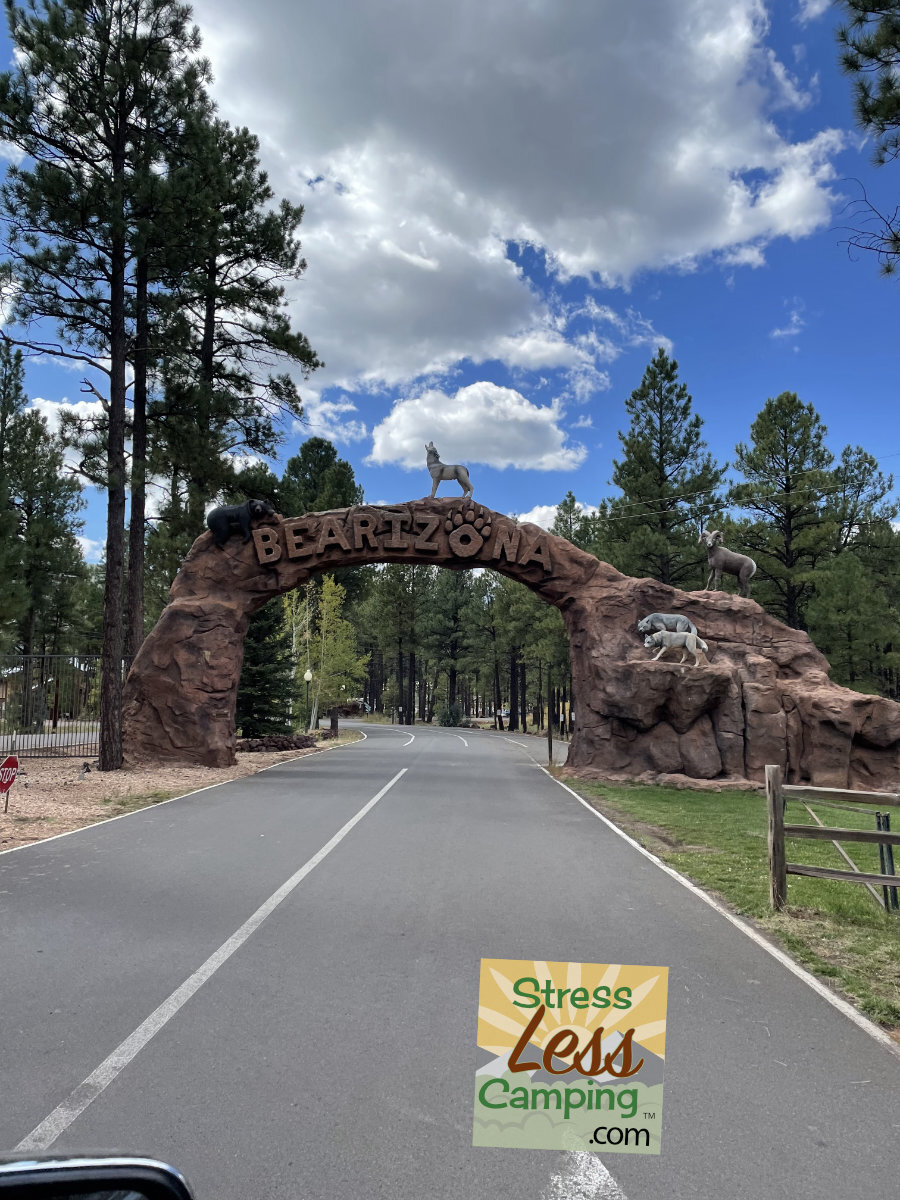
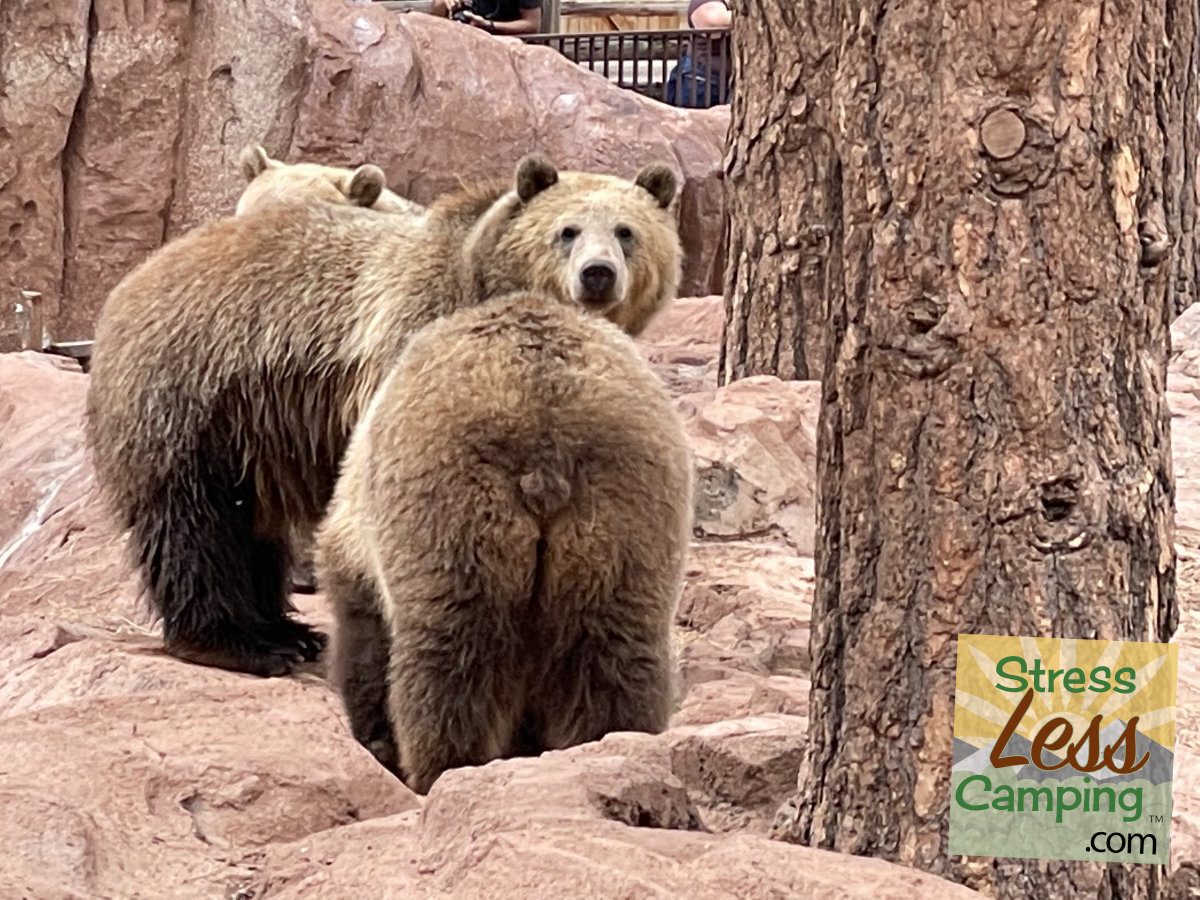
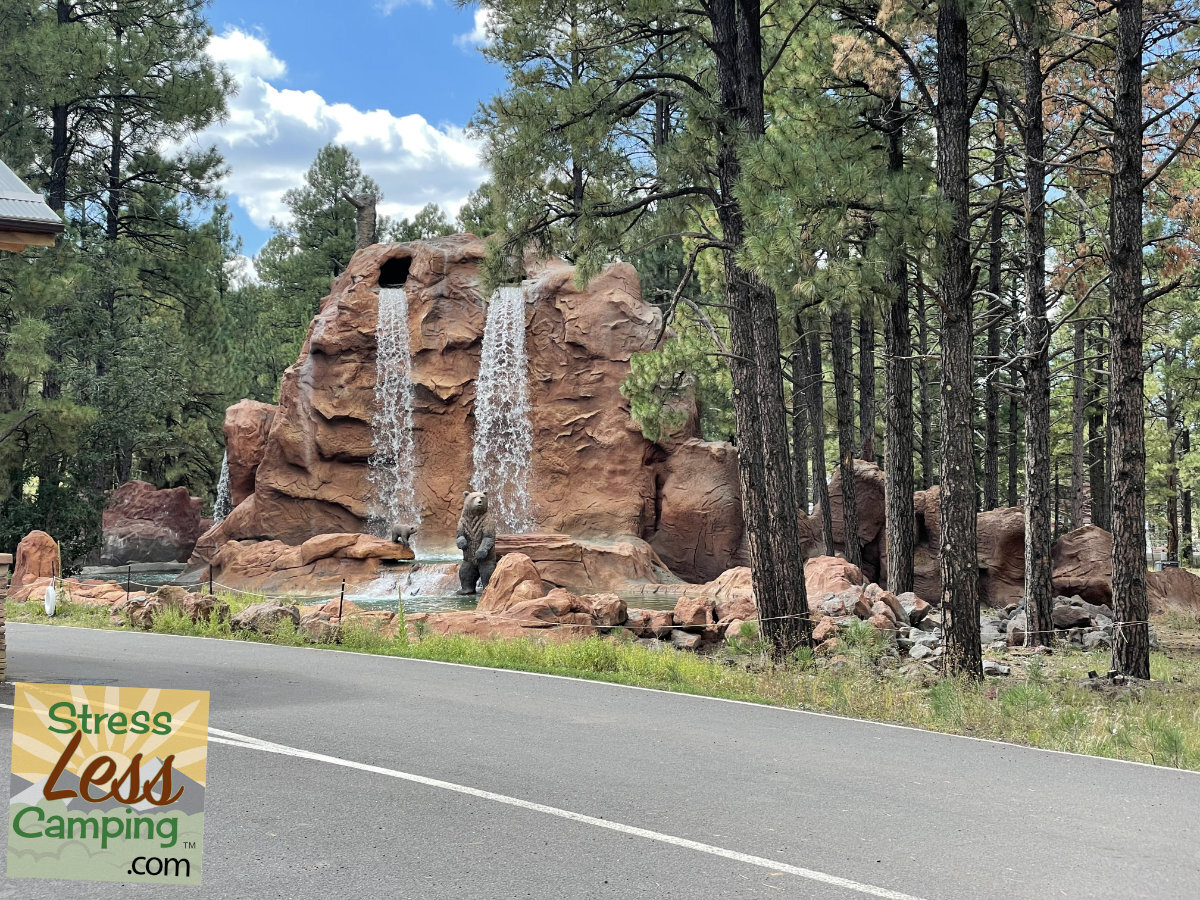
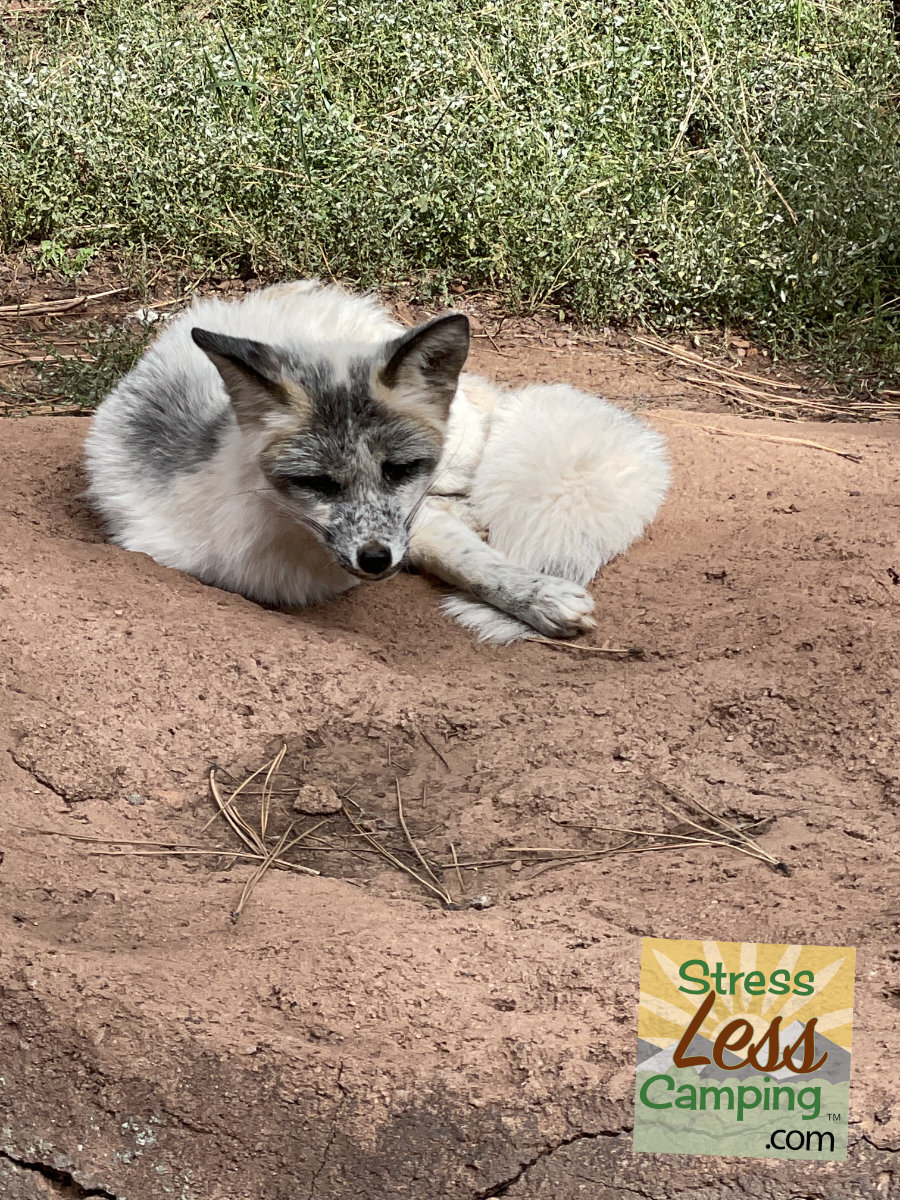
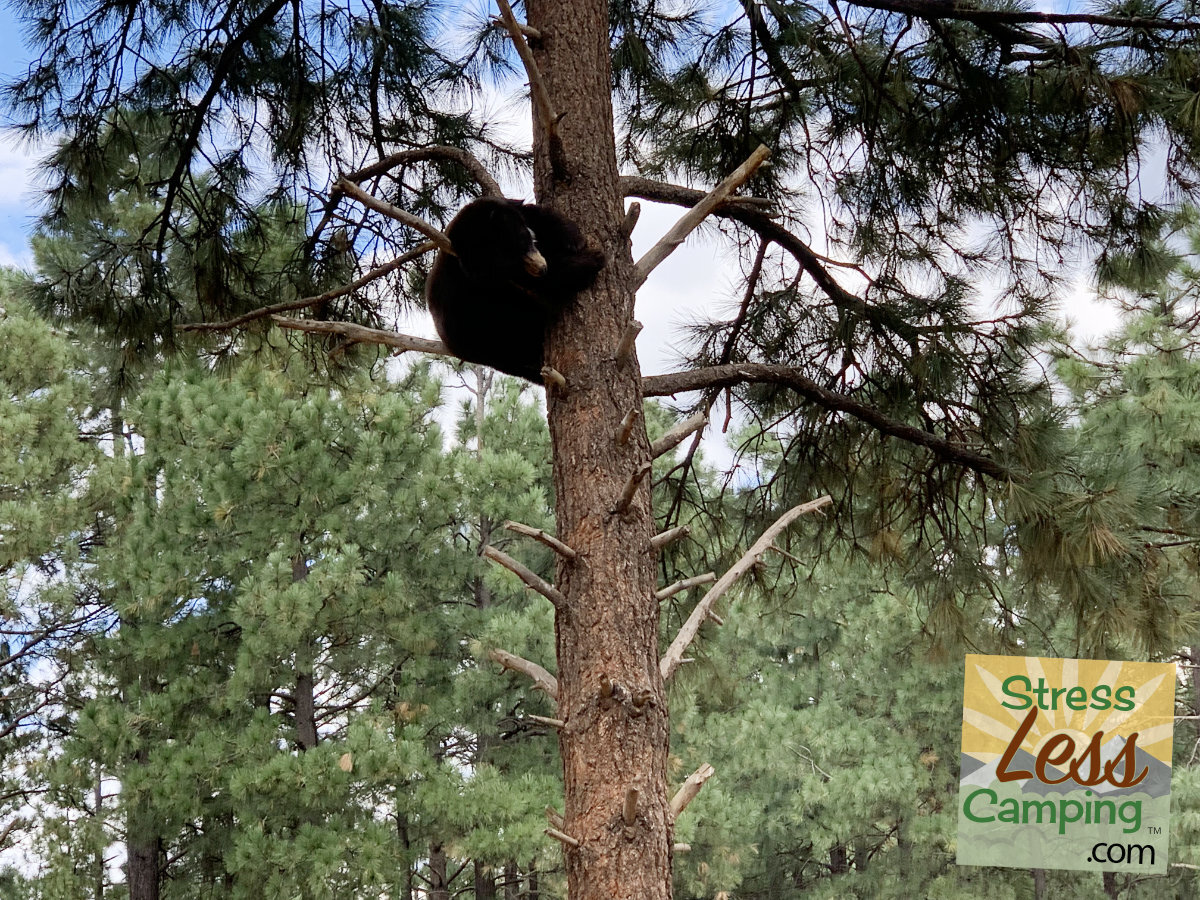
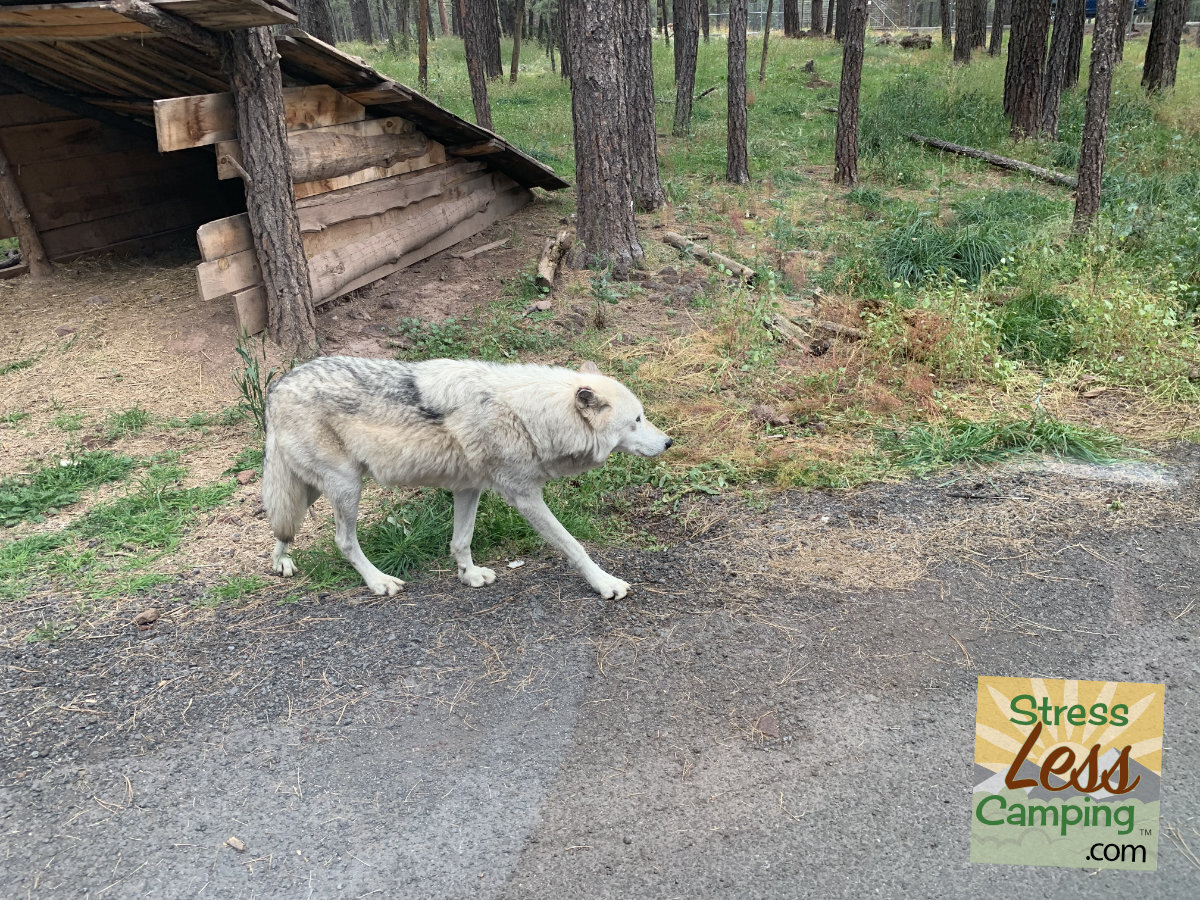

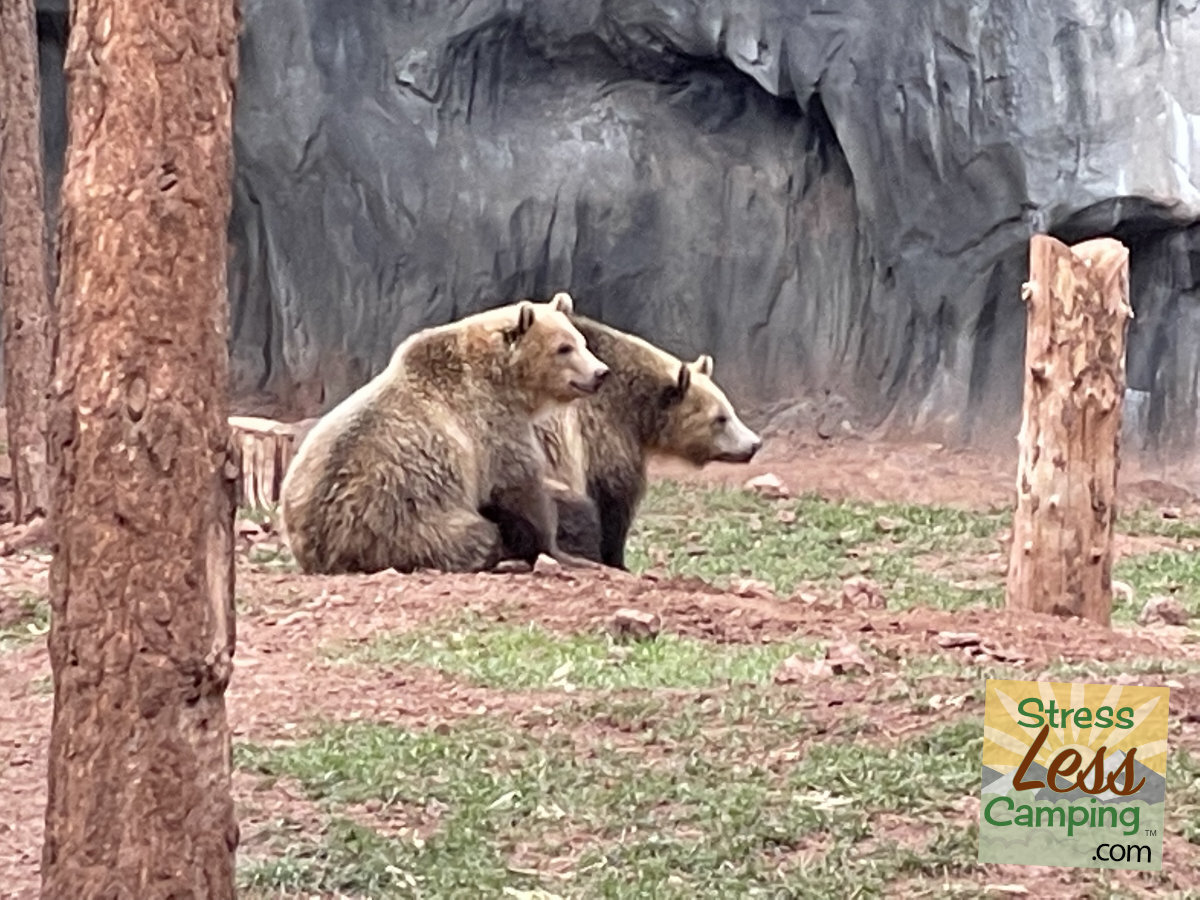

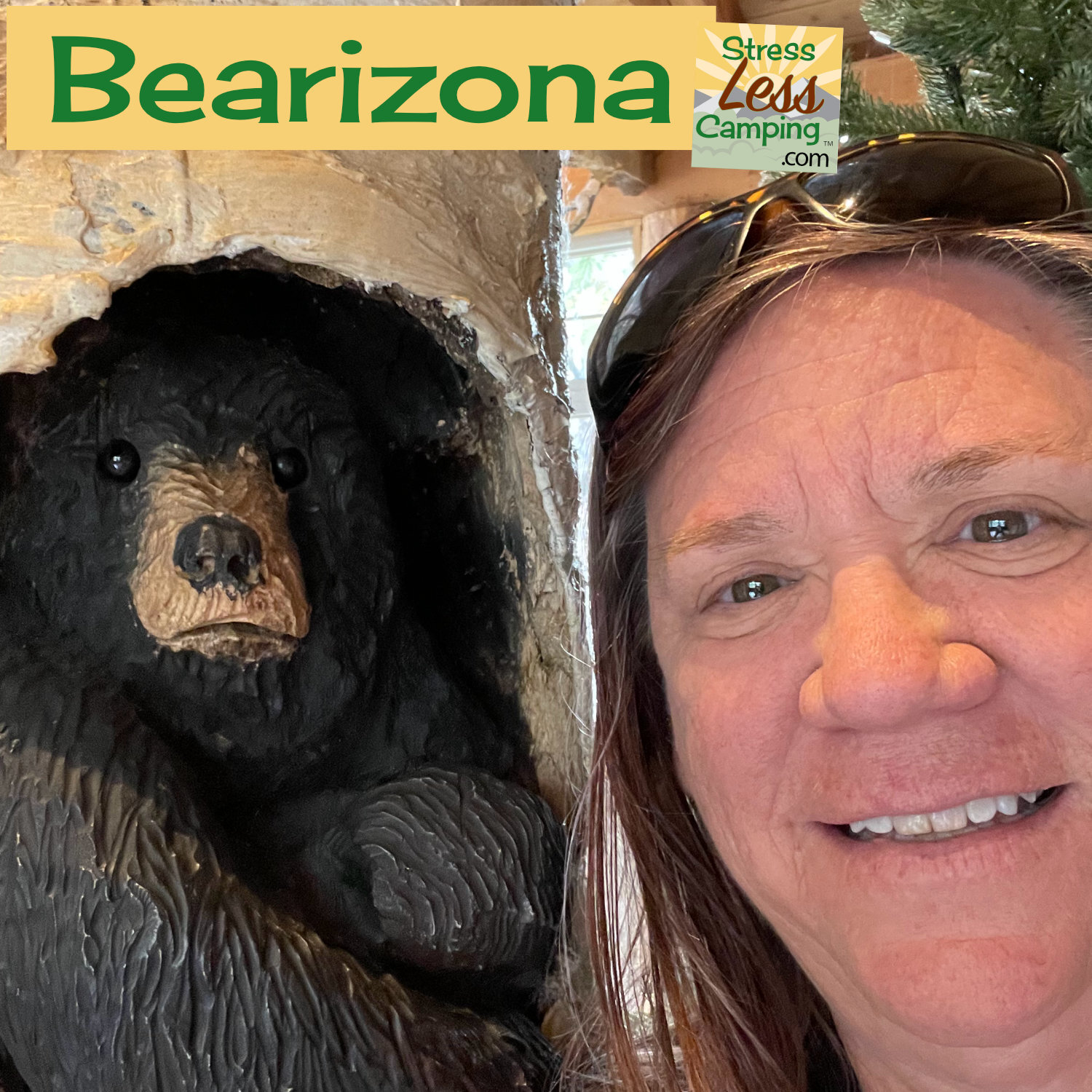

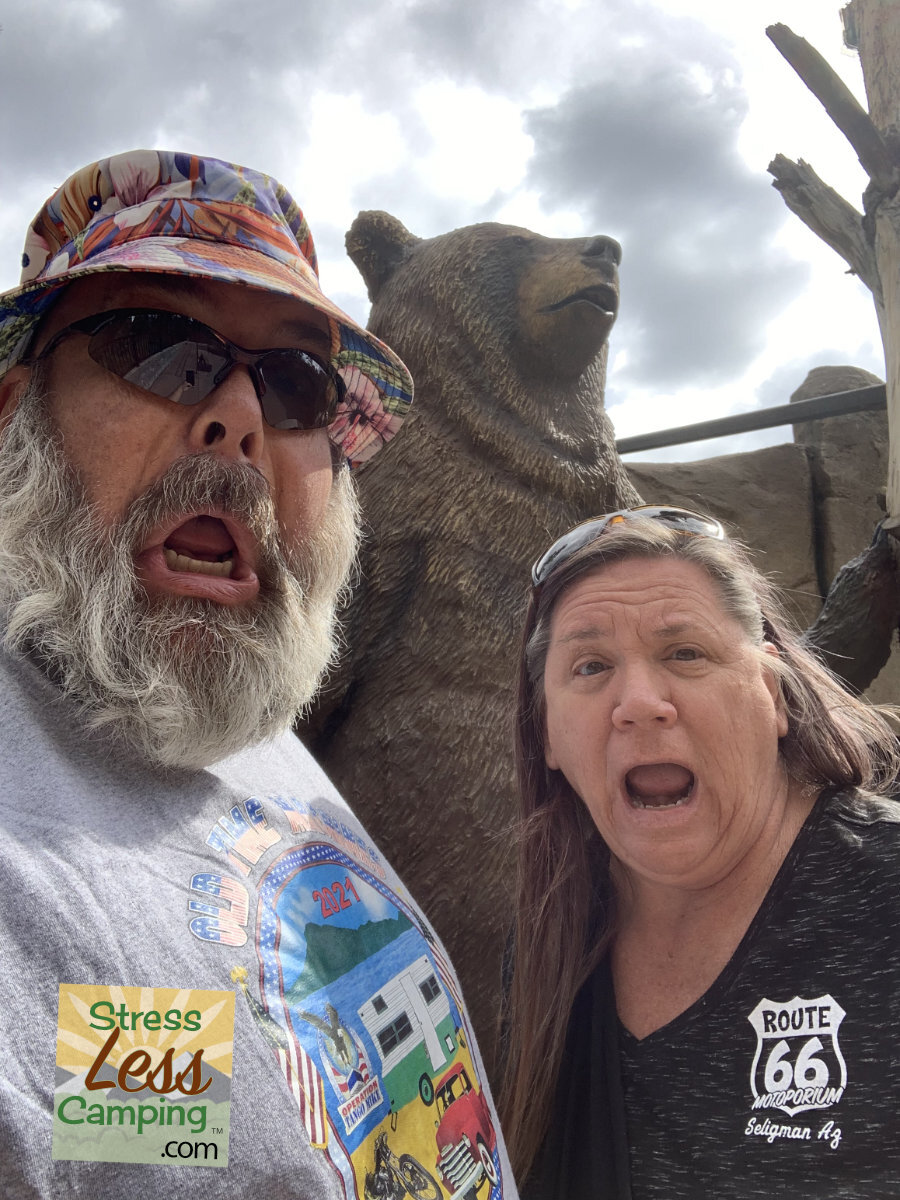
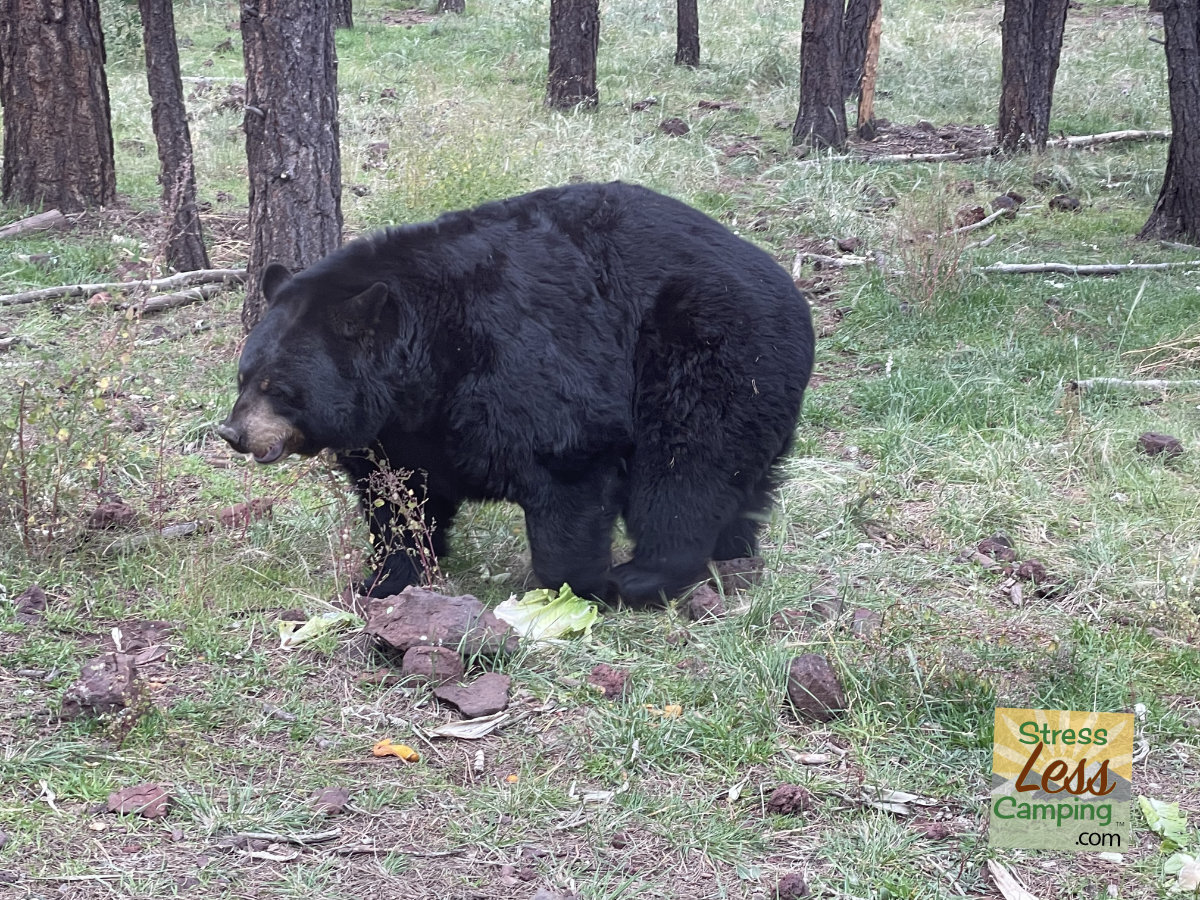
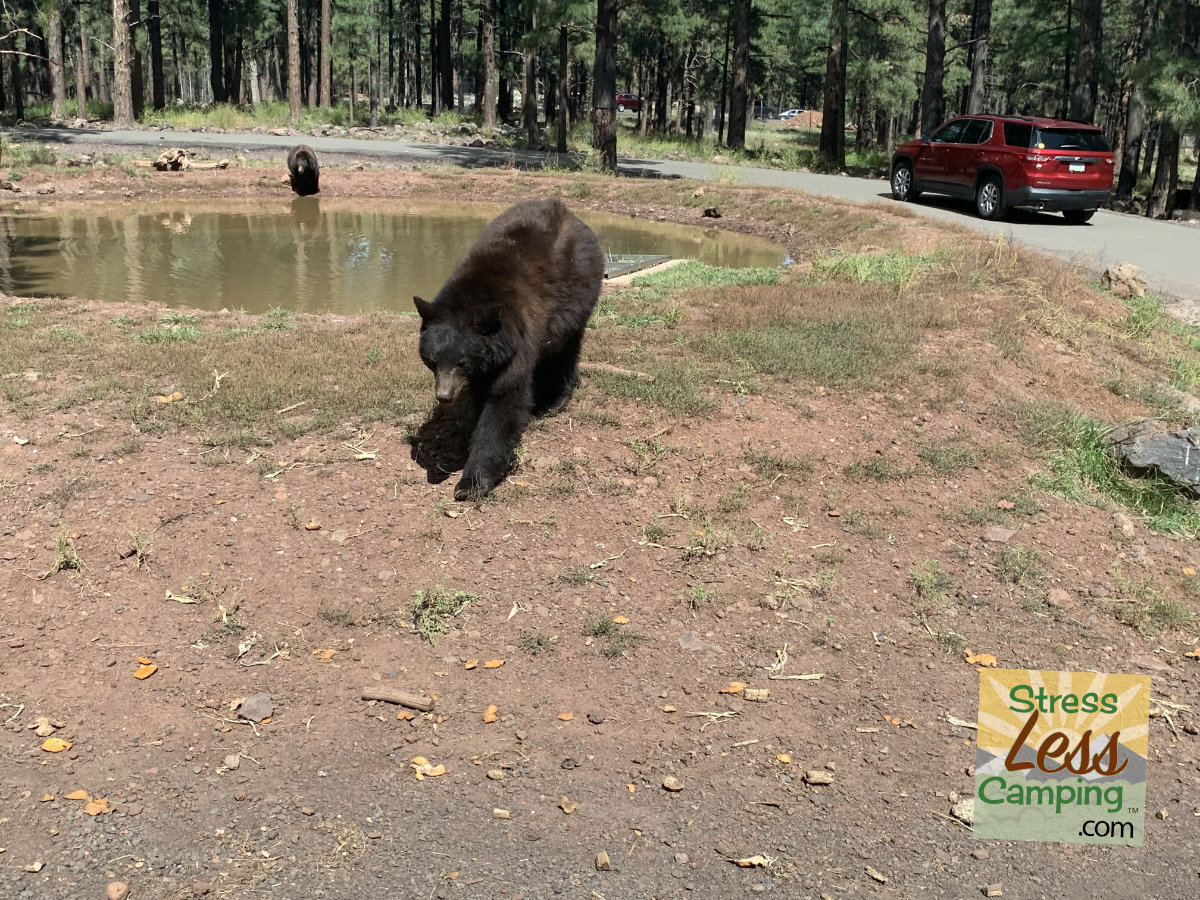
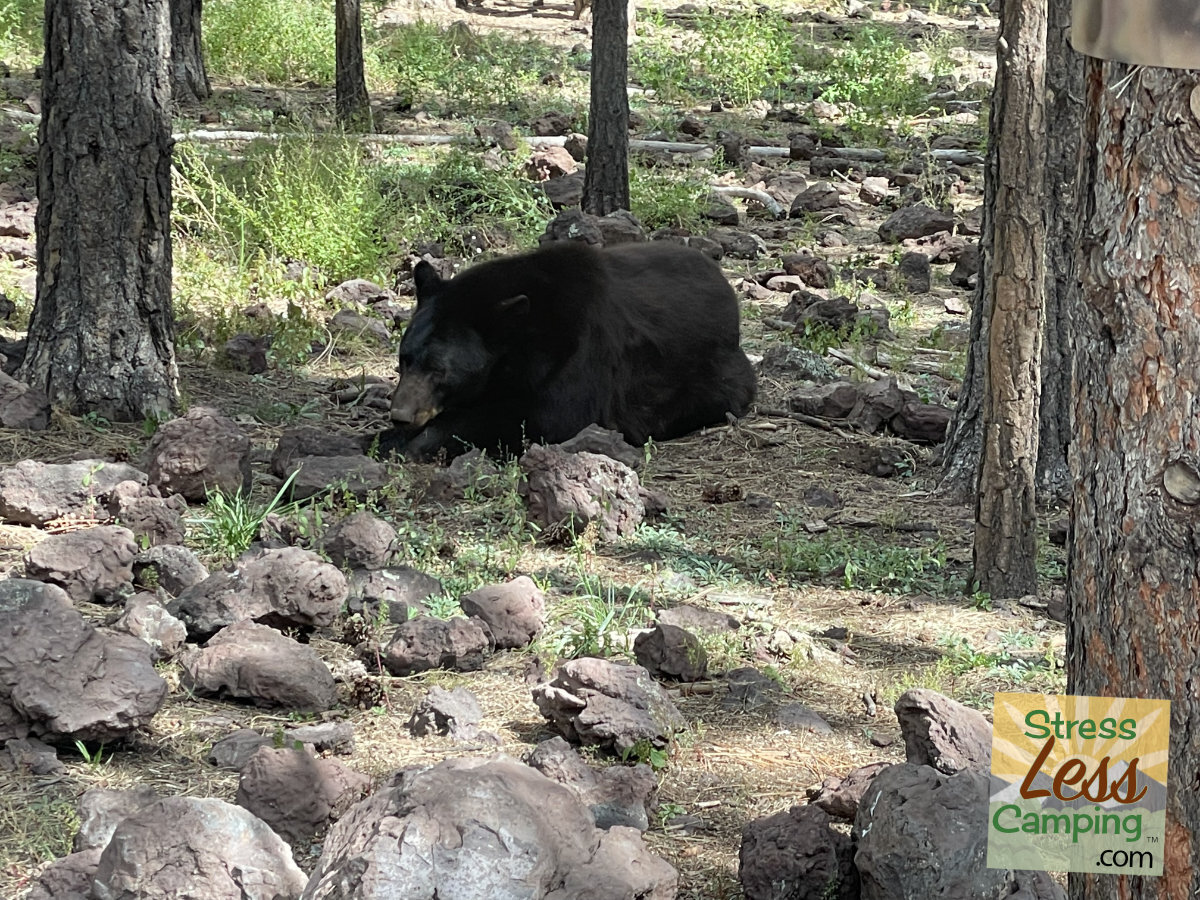

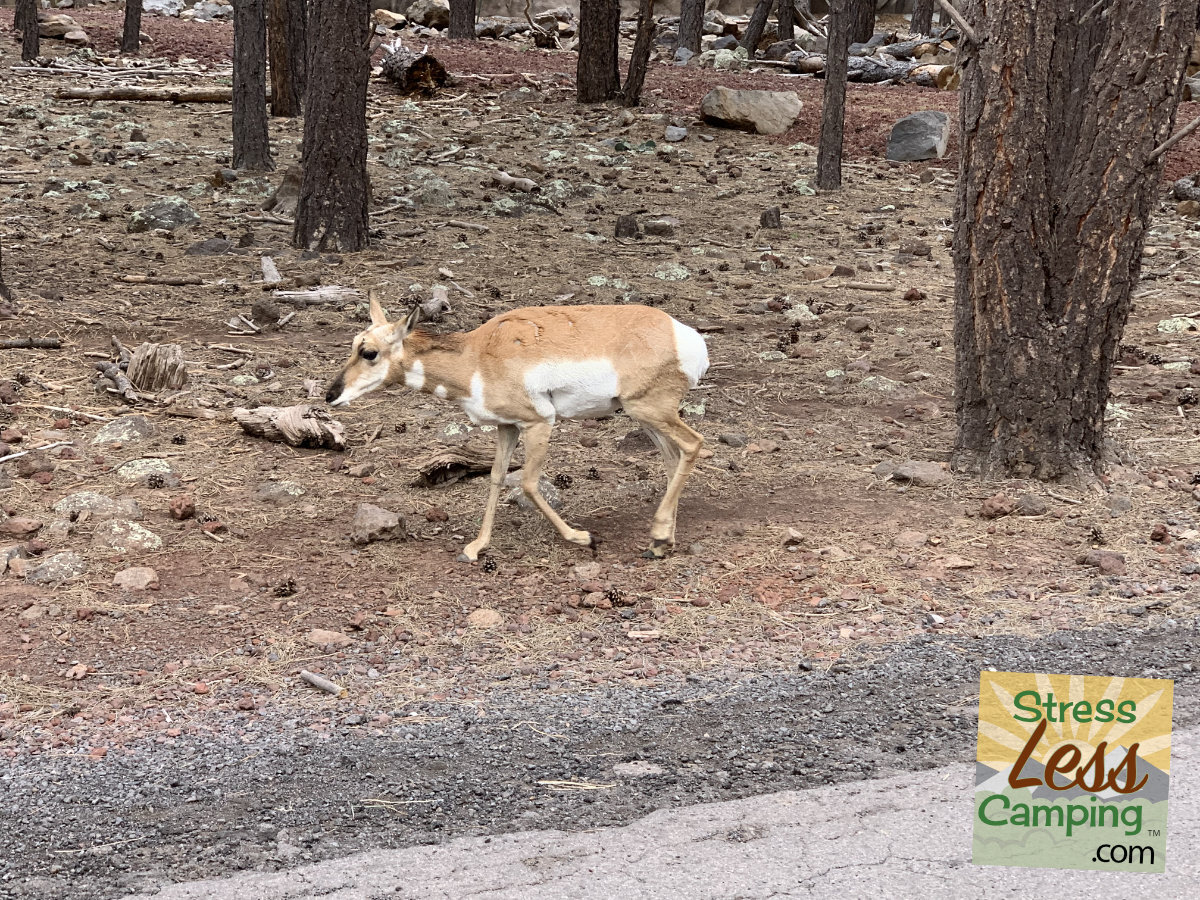

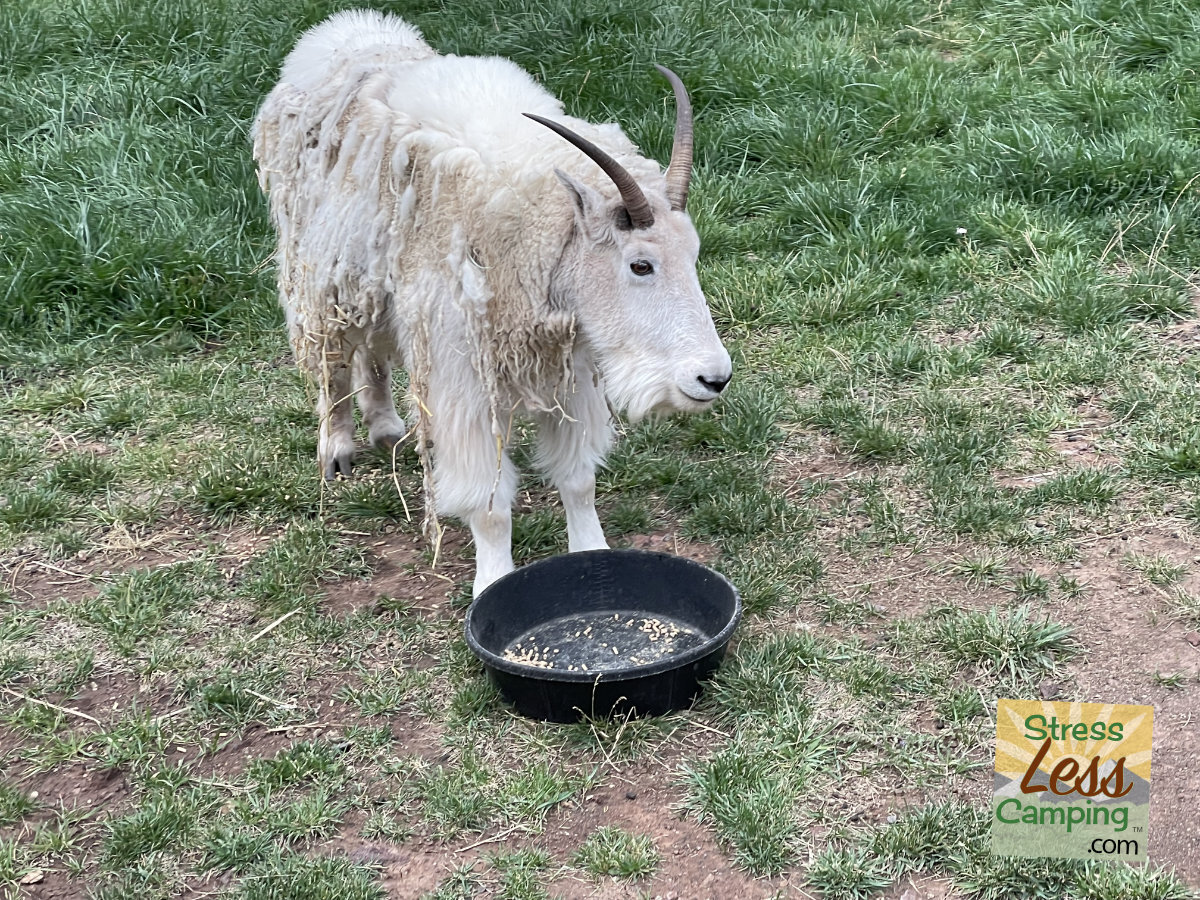


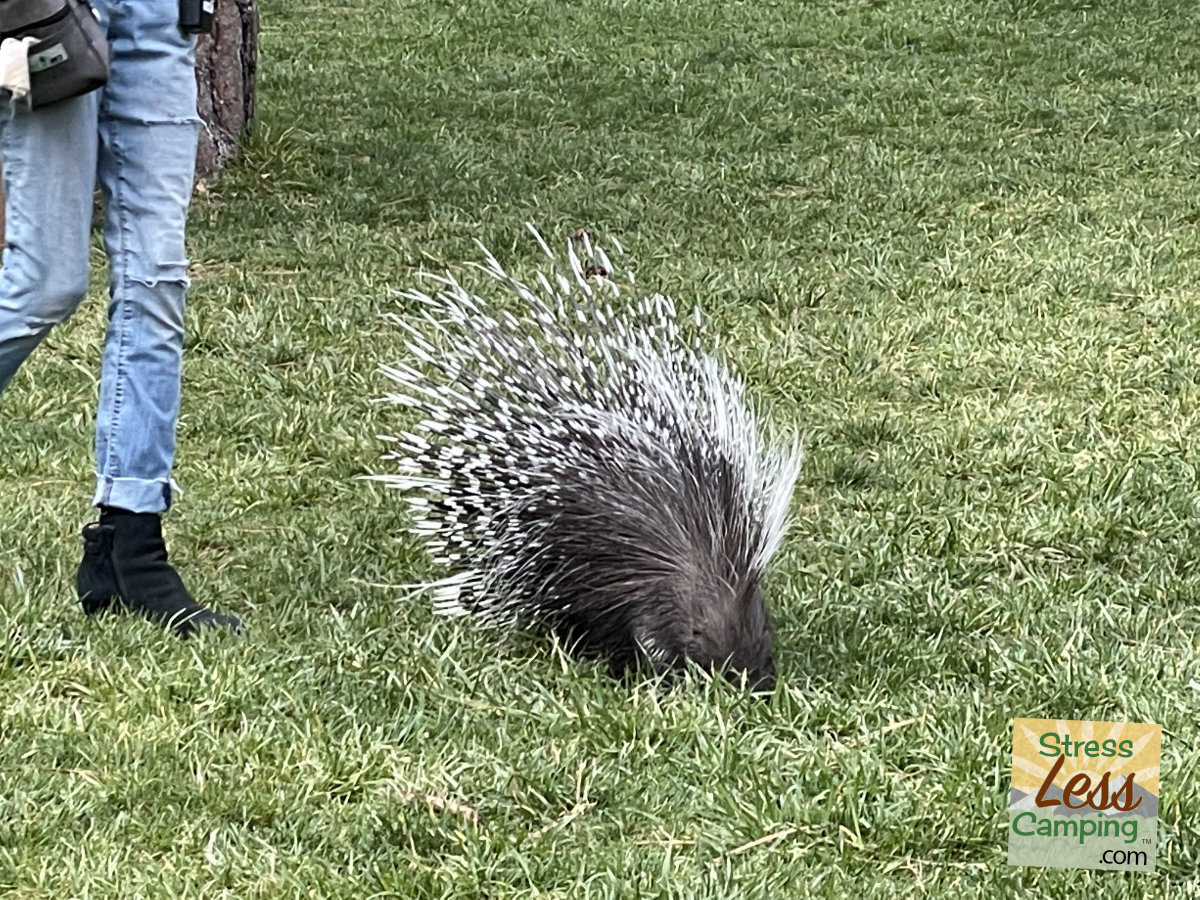
Historic Barrel plus Bottle House
This is a must visit for those who want a good beer or just a fun place to stop. In fact our article on the Historic Barrel + Bottle House kicked off our new Beer Voyeur series.
Pine Country Restaurant
While we didn’t eat a meal in the Pine Country Restaurant we did get a couple of pieces of their popular home-made pies. At the suggestion of a team member we got lemon meringue pie and chocolate peanut butter pie. The lemon meringue was worth the calories but not the best we’ve had, but the chocolate peanut butter pie was outstanding. The place is hopping and we suspect the food is good too, but life’s short. Eat dessert first.
Meteor Crater
More than just a big hole in the ground this is a place where astronauts trained. Peggy wrote an article about the Meteor Crater.
Petrified Forest
More than 200 million years ago, flourishing trees and vegetation covered much of this area of Northeastern Arizona. But volcanic lava destroyed the forest, and the remains were embedded into sediment comprised of volcanic ash and water.
Erosion set the logs free millions of years later, revealing the petrified wood – made mostly of quartz – that we got to see today.
But there’s more than wood to the Petrified Forest’s history. You can see remnants of more than 13,000 years of human history at the park, including Puerco Pueblo – a nearly 800-year-old, 100-room dwelling, a diverse, extensive collection of prehistoric pottery fossils and even a protected section of historic Route 66.
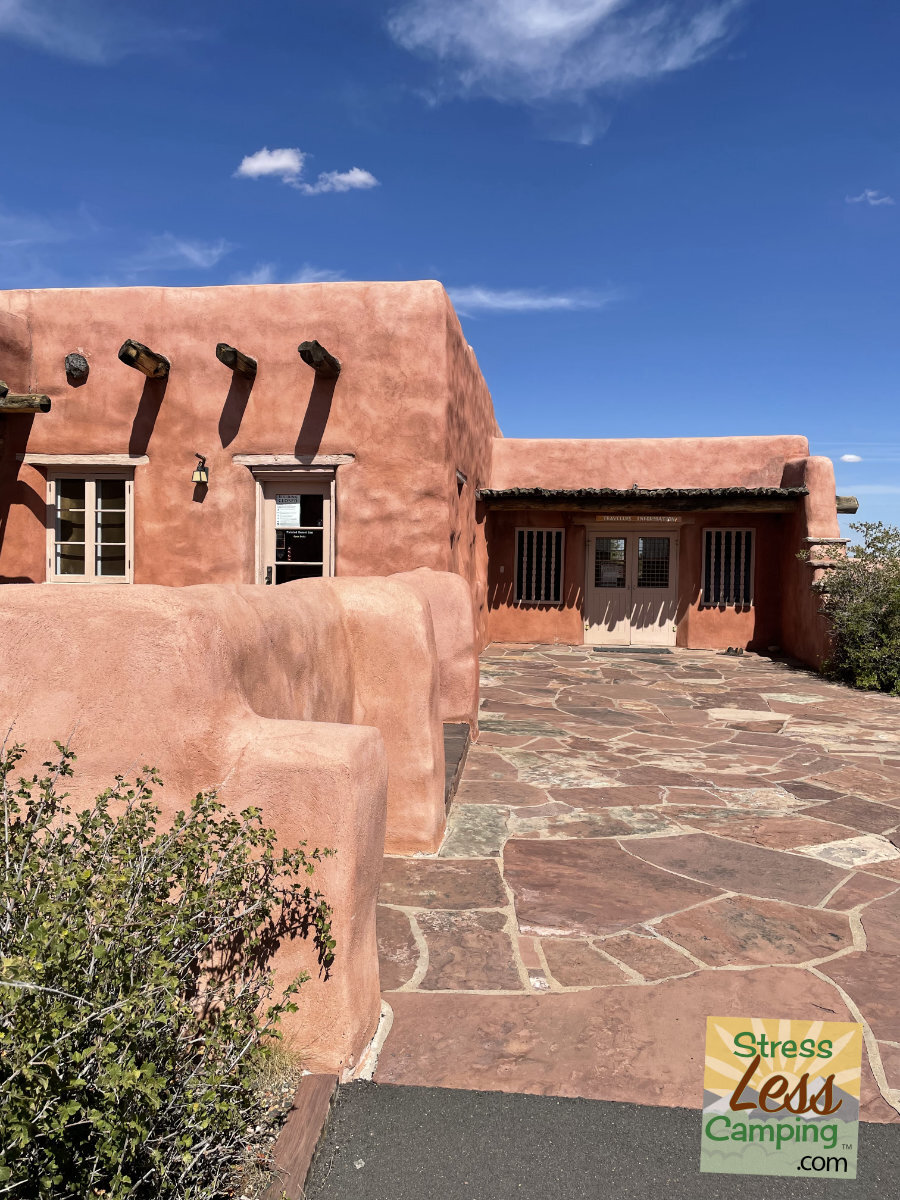
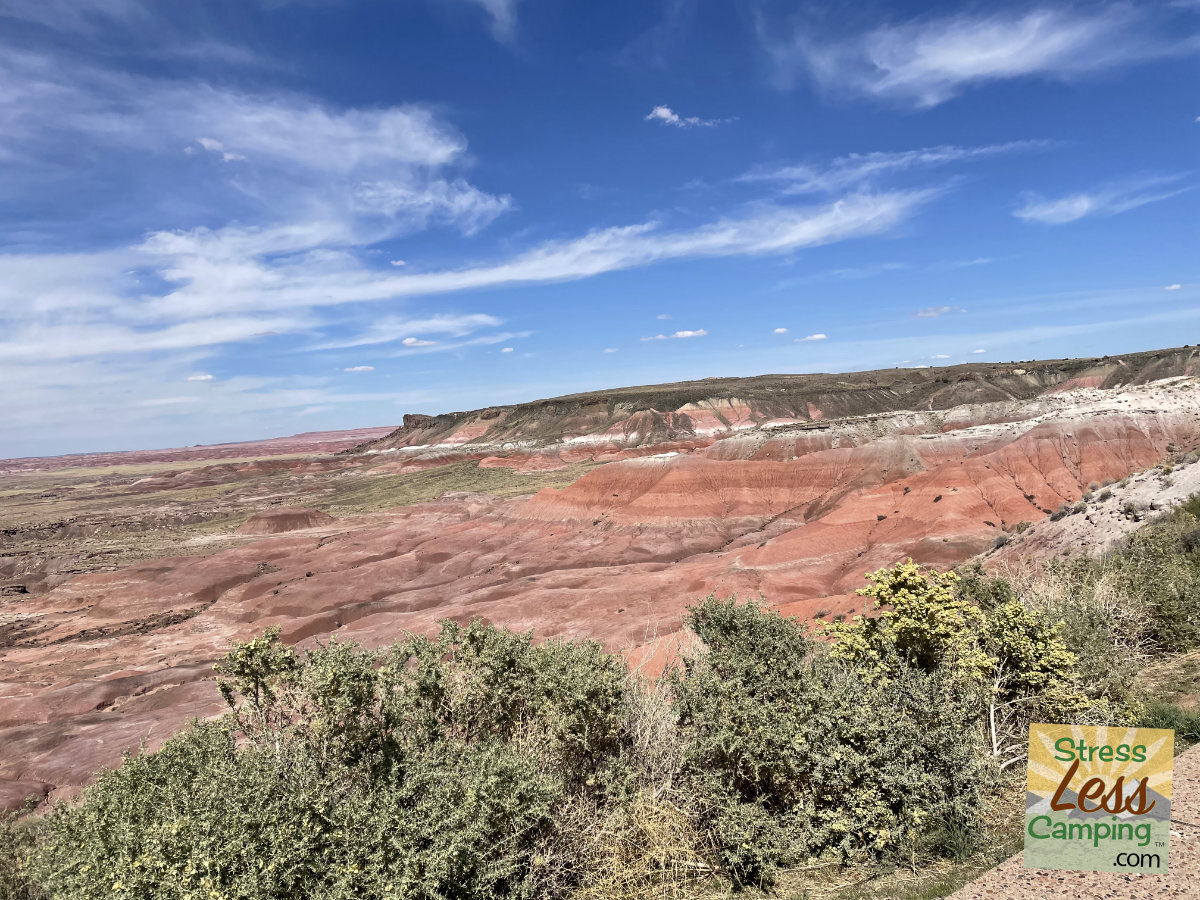
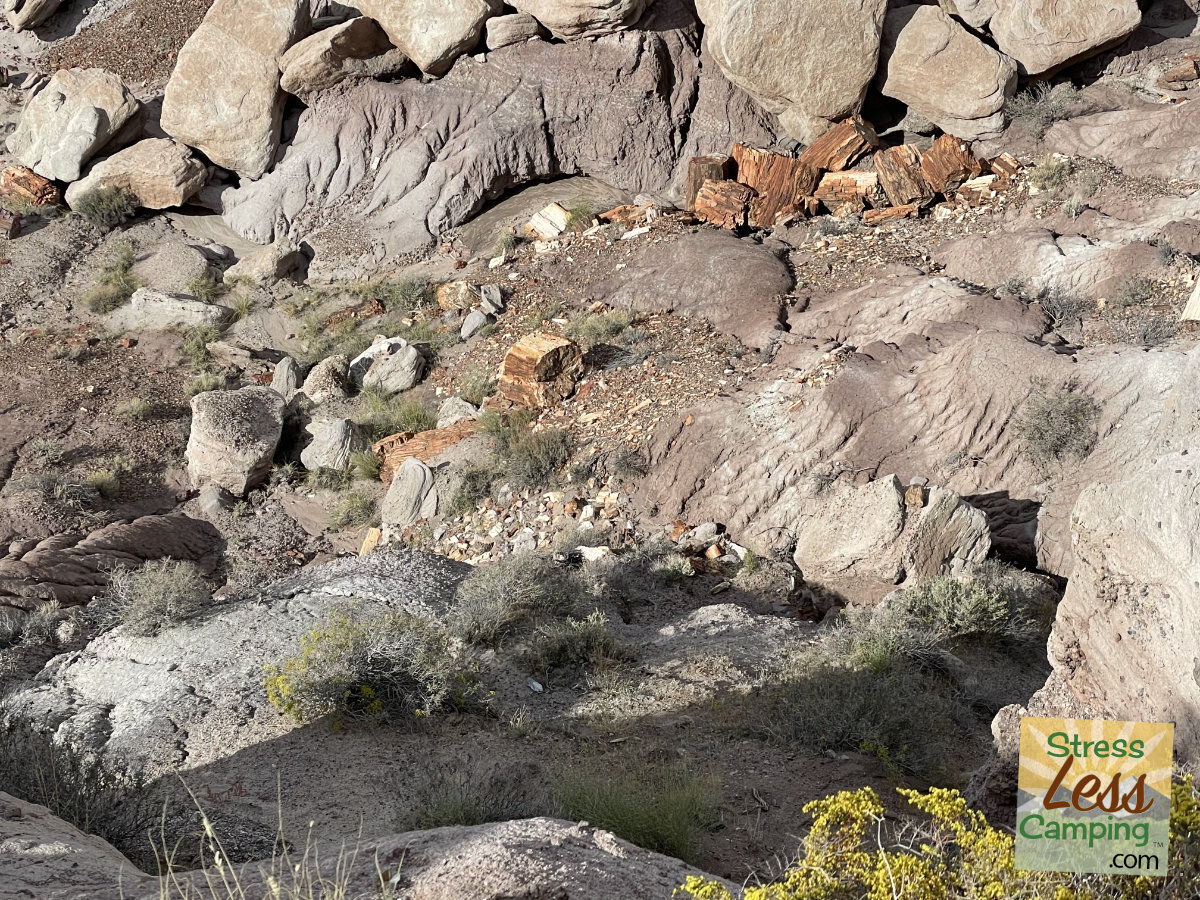
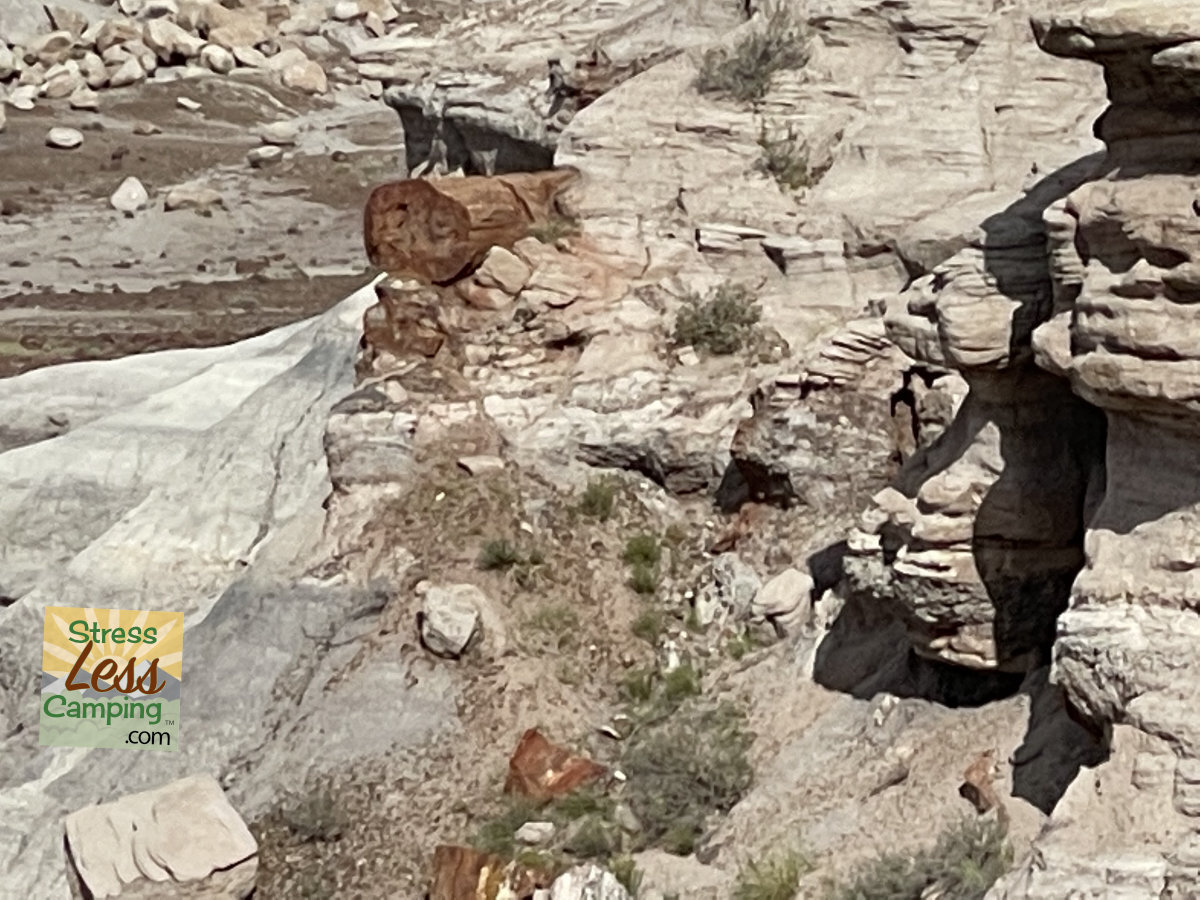
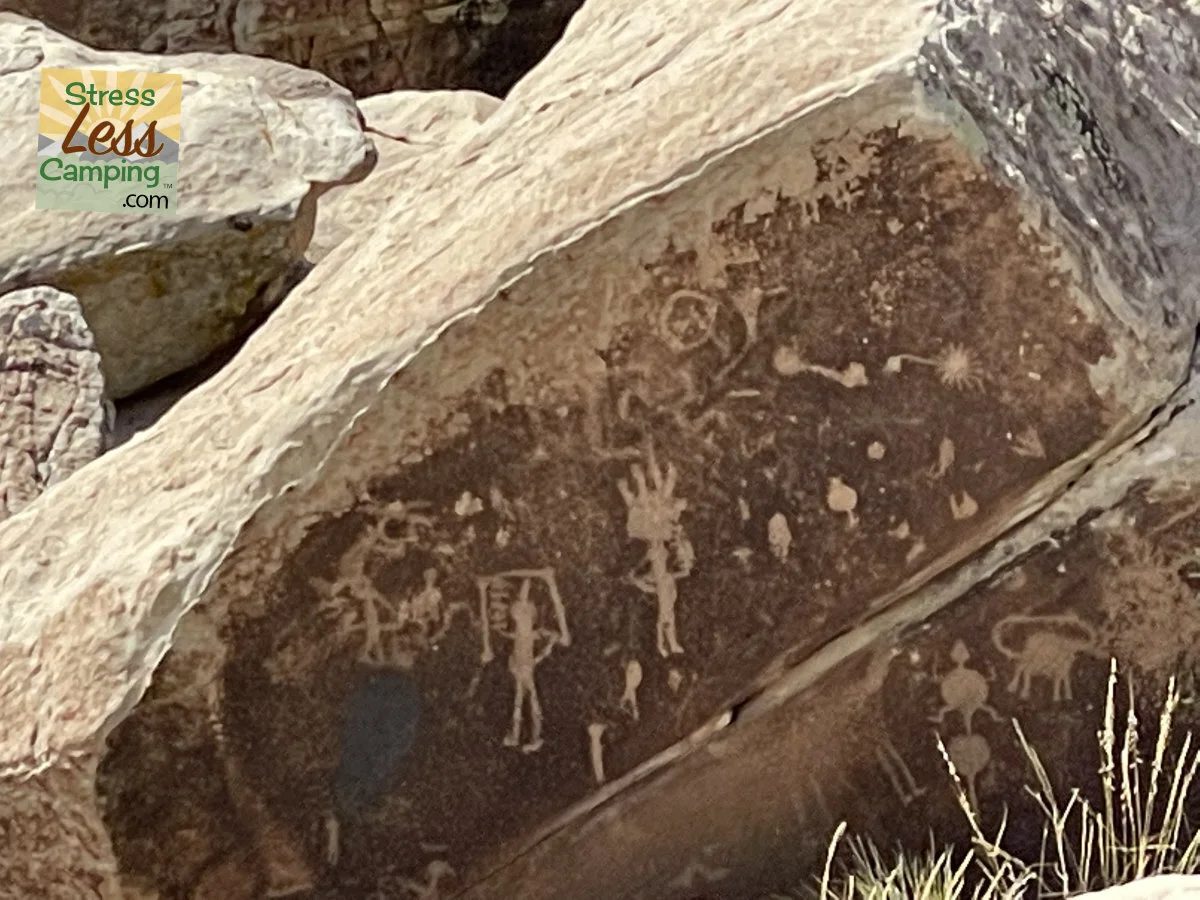
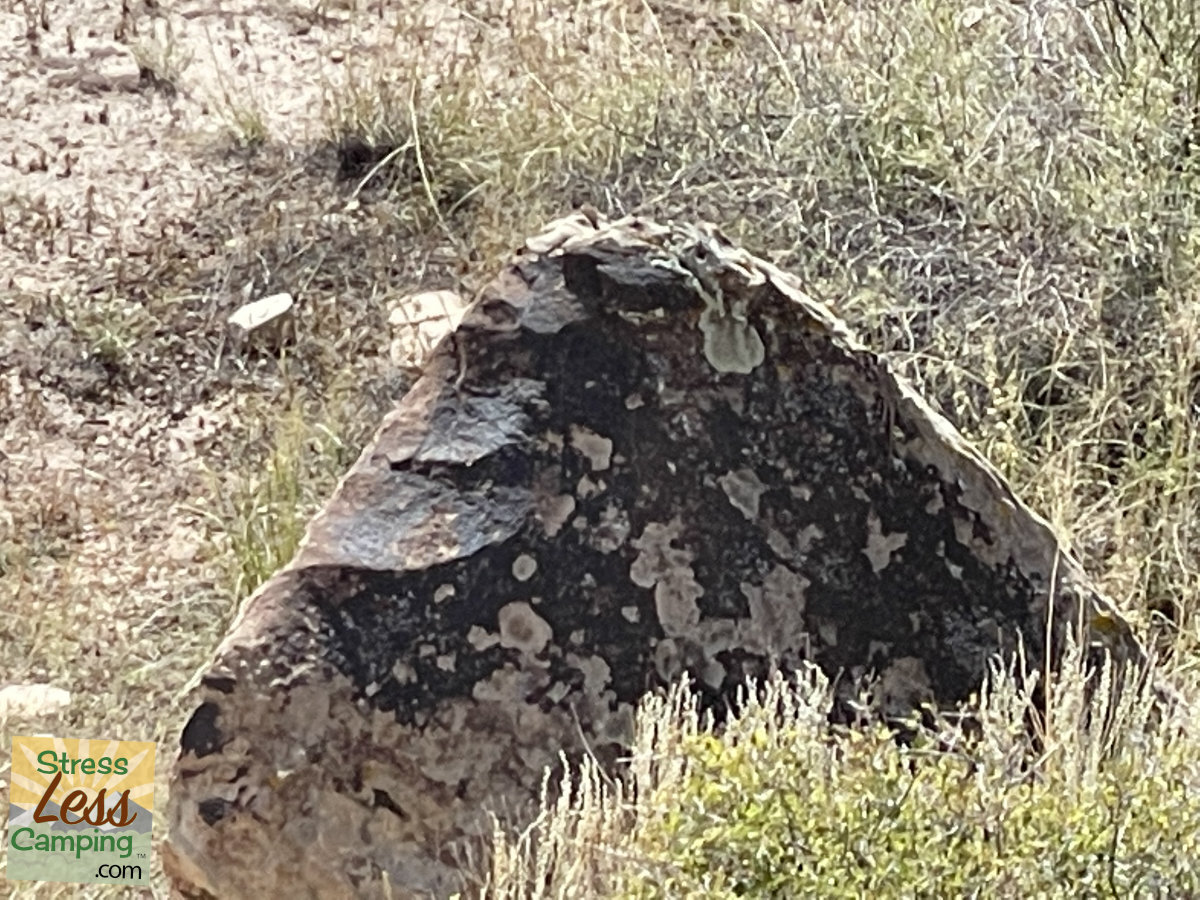
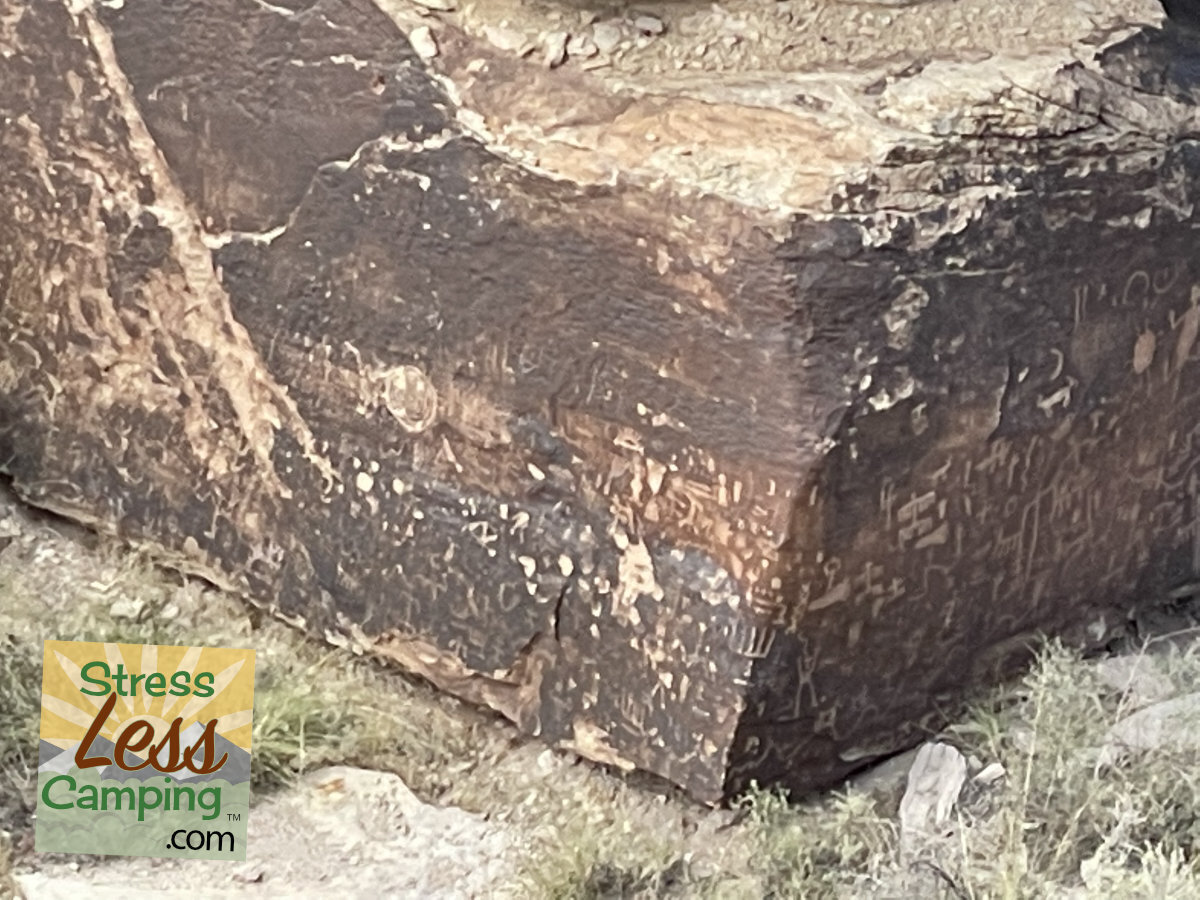
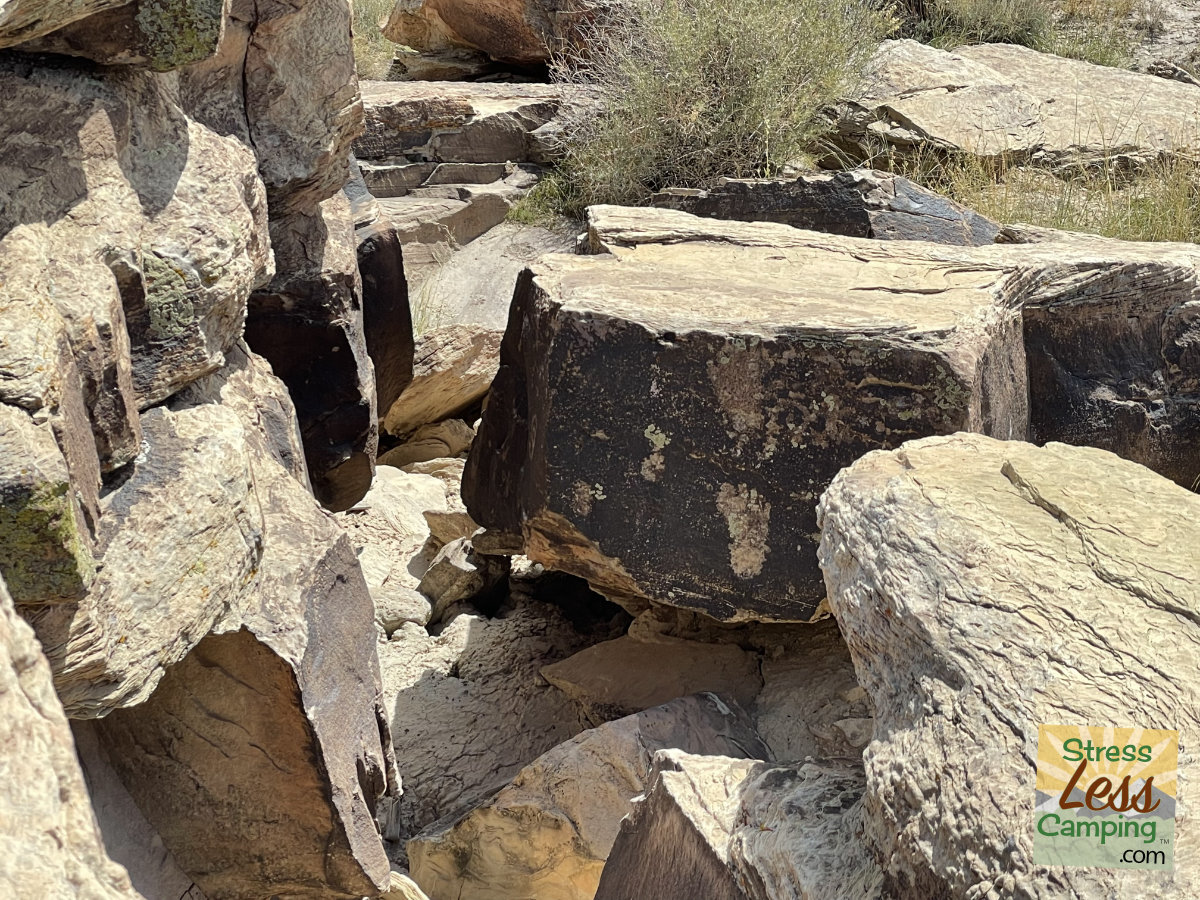
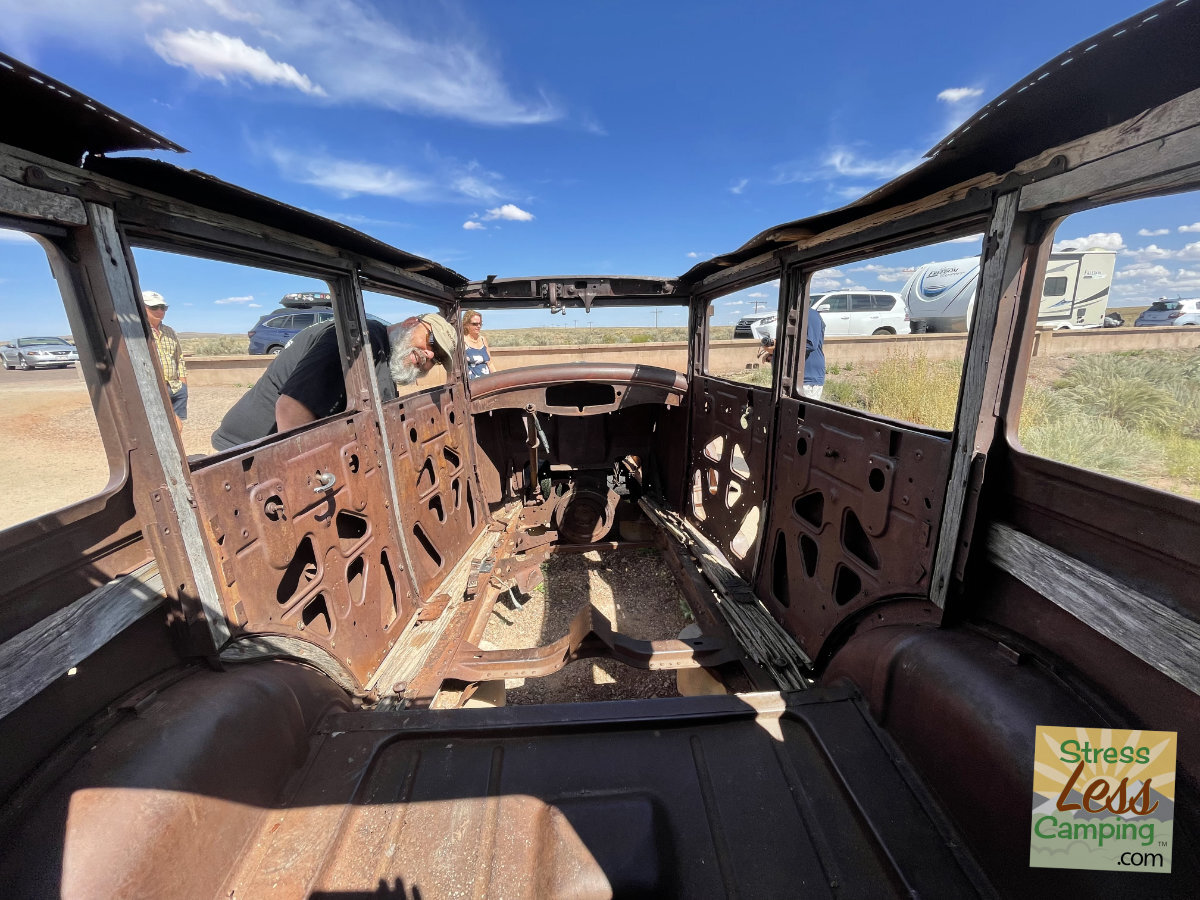

The petroglyphs and remnants of human history were simply fascinating, especially considering their age and condition.
Petrified Forest National Park provides access to many outdoor activities, and the best way to enjoy and experience it is on foot. Designated hiking trails range in length from less than a half-mile to three miles, and each trail promises you a breathtaking view of the surrounding Painted Desert.
You can also head out into the Petrified Forest National Wilderness Area by horse, burro, mule or llama, or you can do an overnight backpacking trip through the park.
Don’t forget Seligman
Seligman is near by Williams and is the birth place of the resurgence of Route 66. The Delgadillo brothers owned two businesses in this little town and saw their sales decline precipitously when Highway 40 bypassed the town. Not ones to let things keep them down, they spurred a movement that really revitalized many sections of Route 66.
In fact, their passion and drive and actions were also components of the spirit of the movie Cars.
One of the businesses owned by the brothers is the historic Snow Cap restaurant opened in 1953 by Juan Delgadillo. Delgadillo was working on an extremely limited budget, so he reportedly built the restaurant mostly from scrap lumber obtained from the nearby Santa Fe Railway yard.
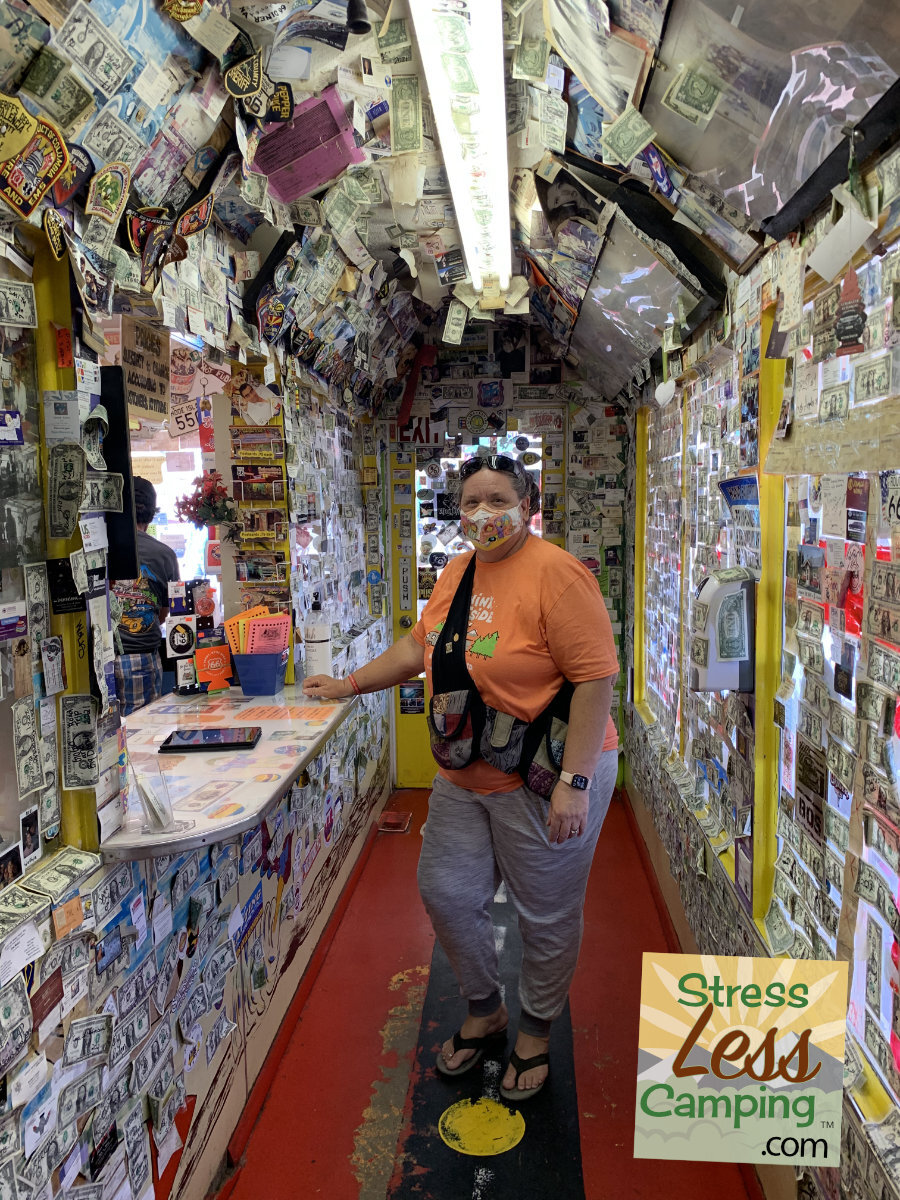


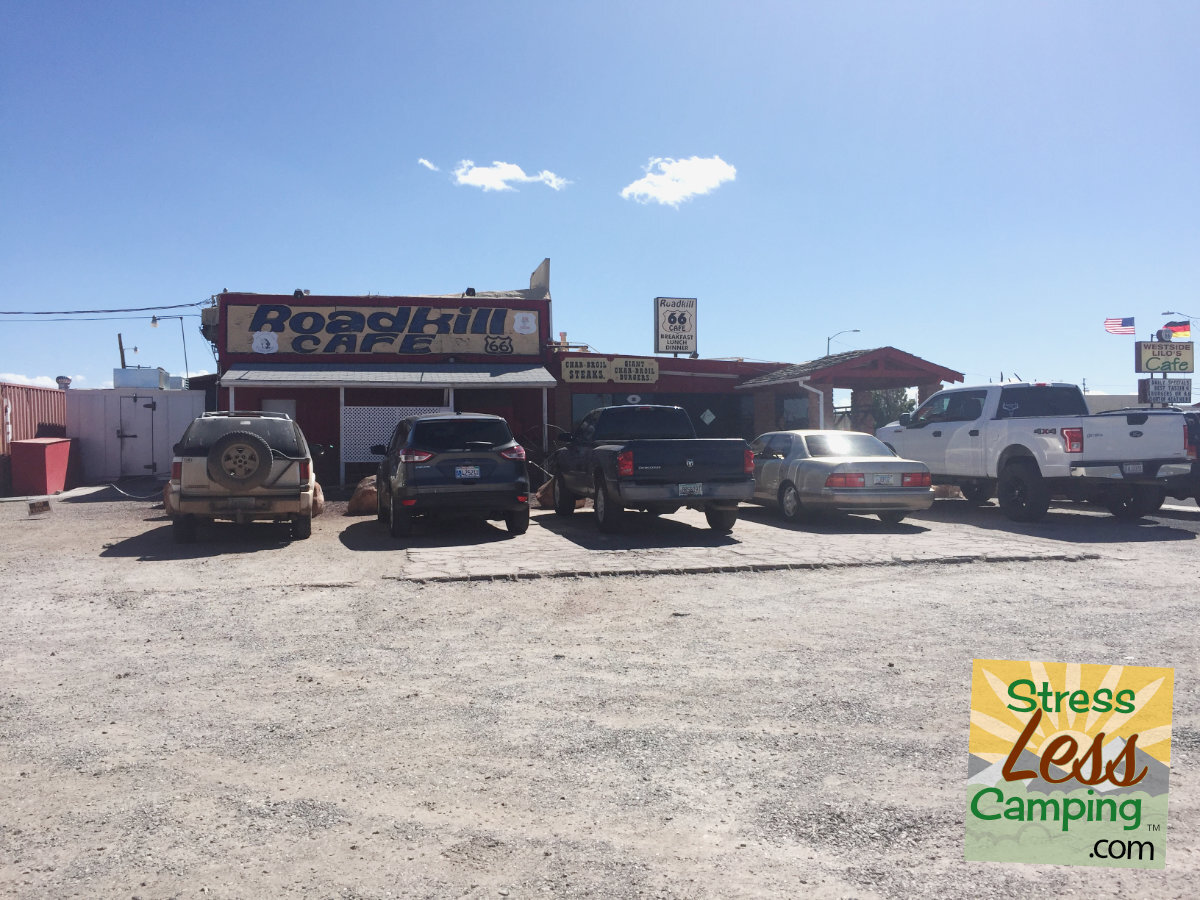
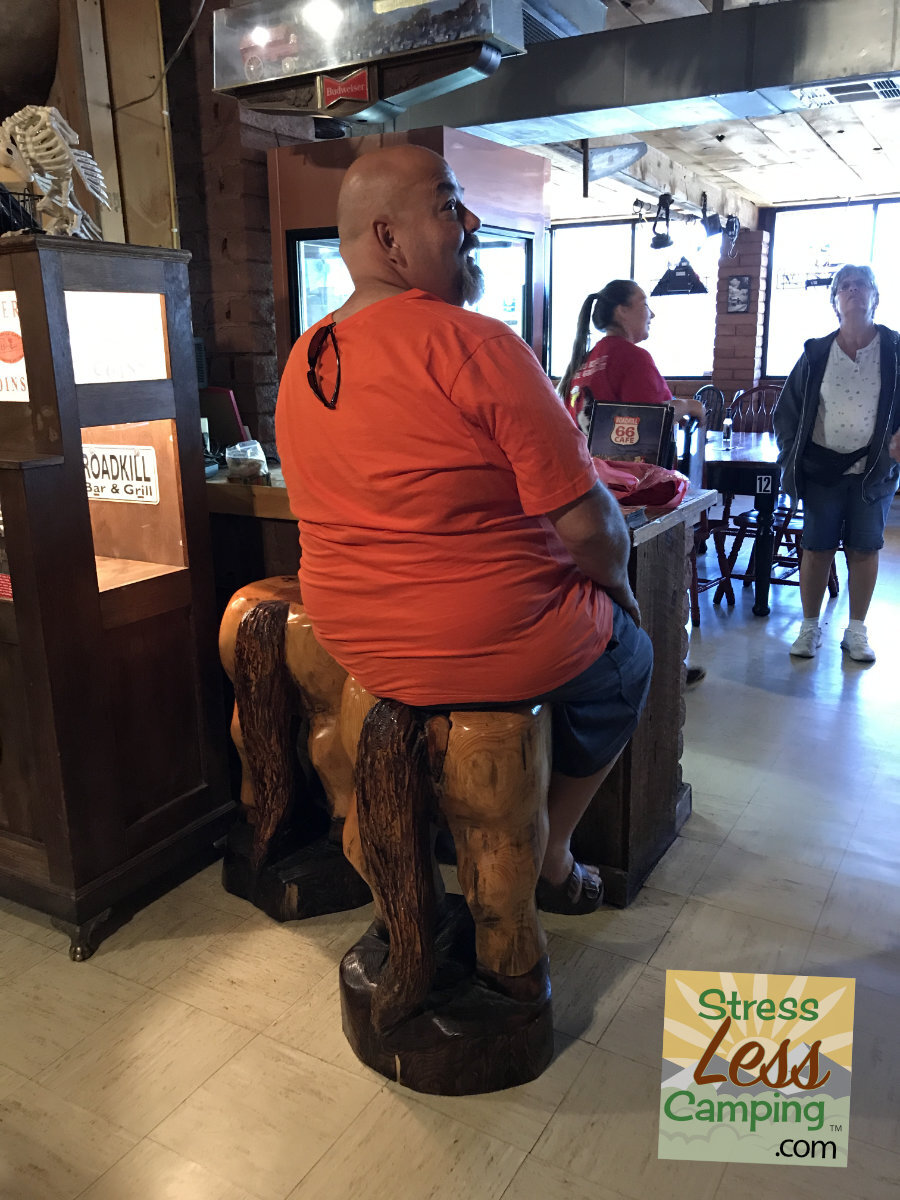
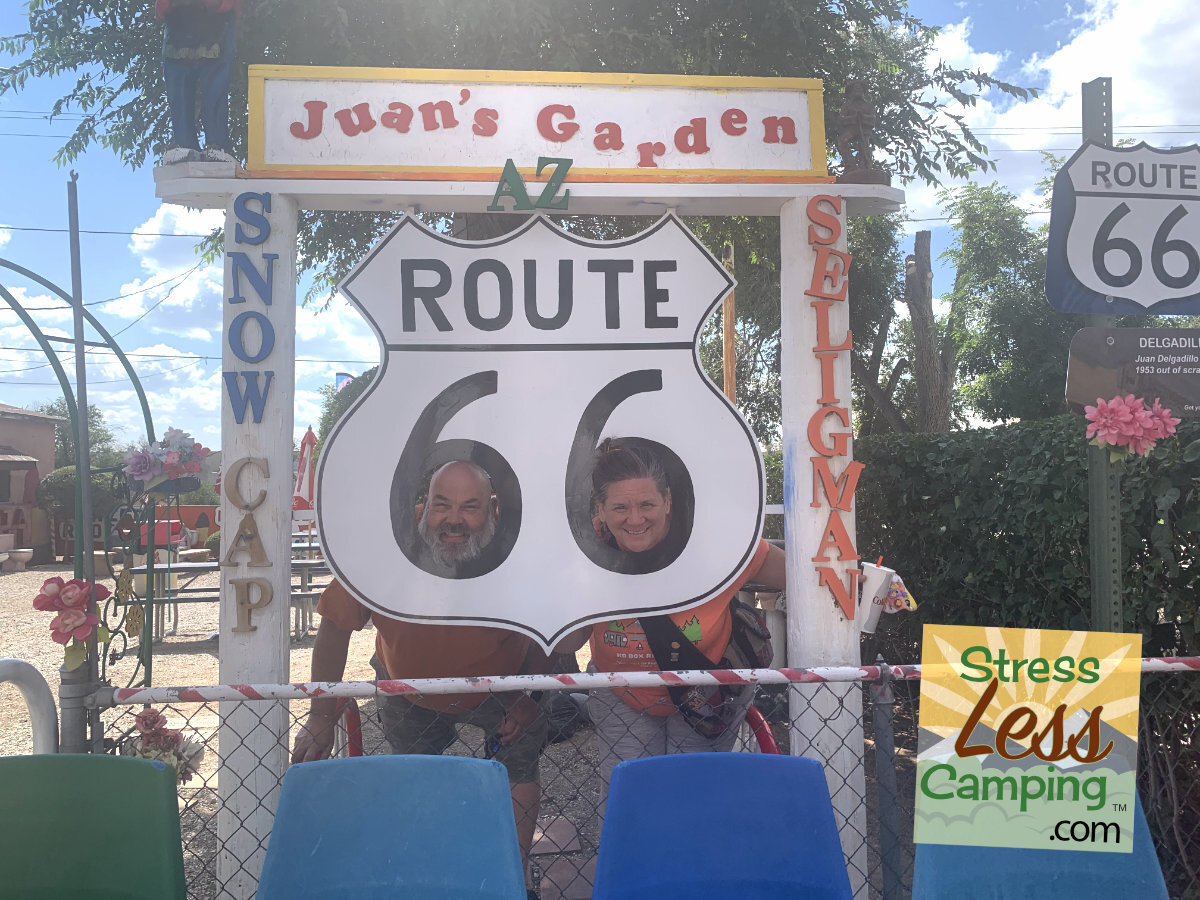
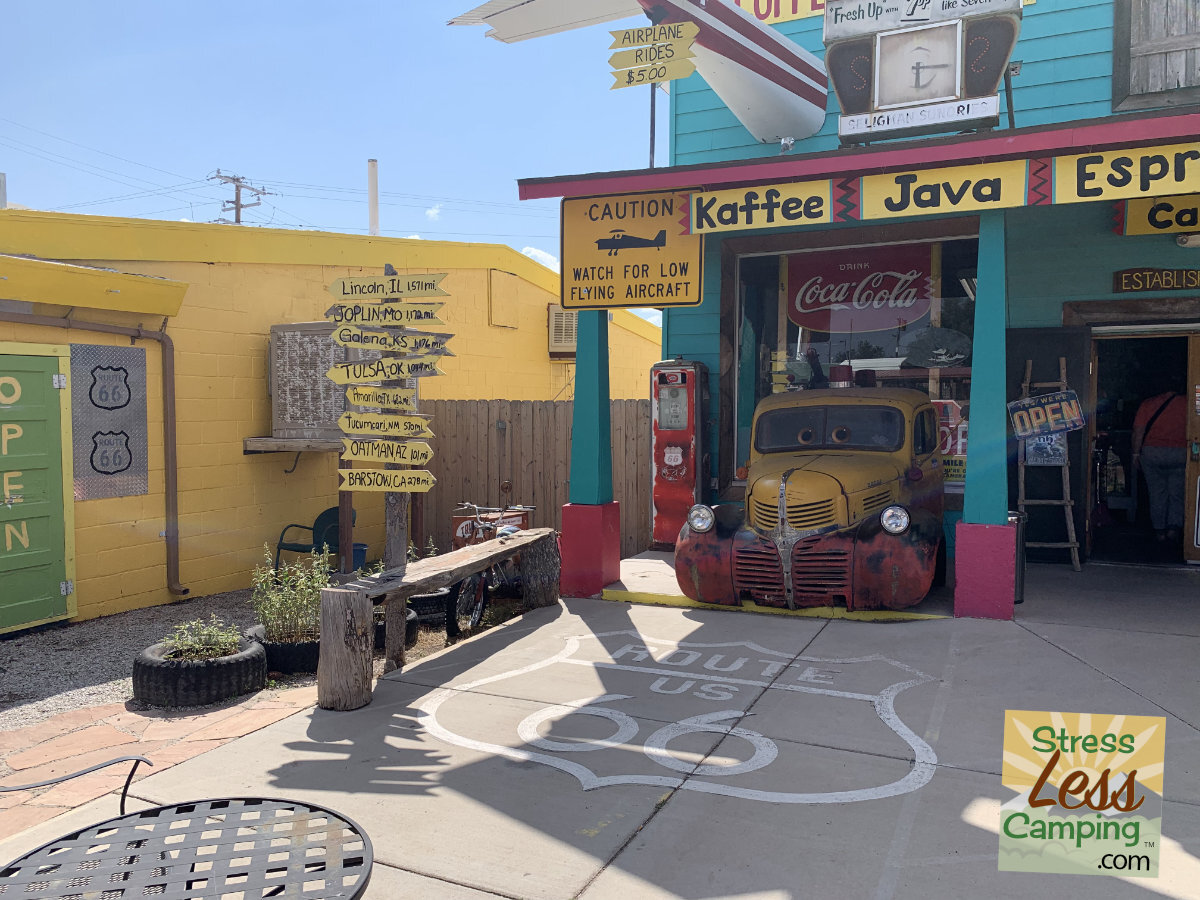
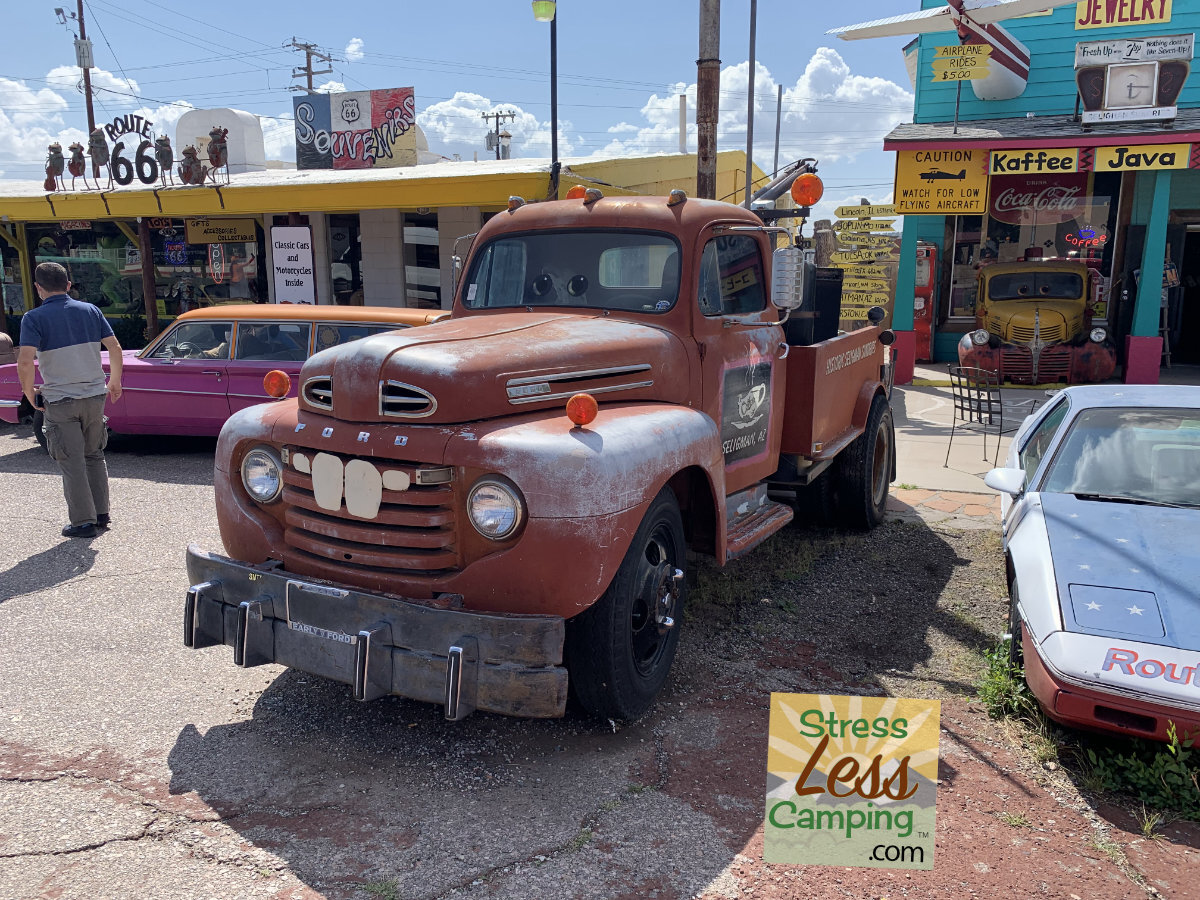
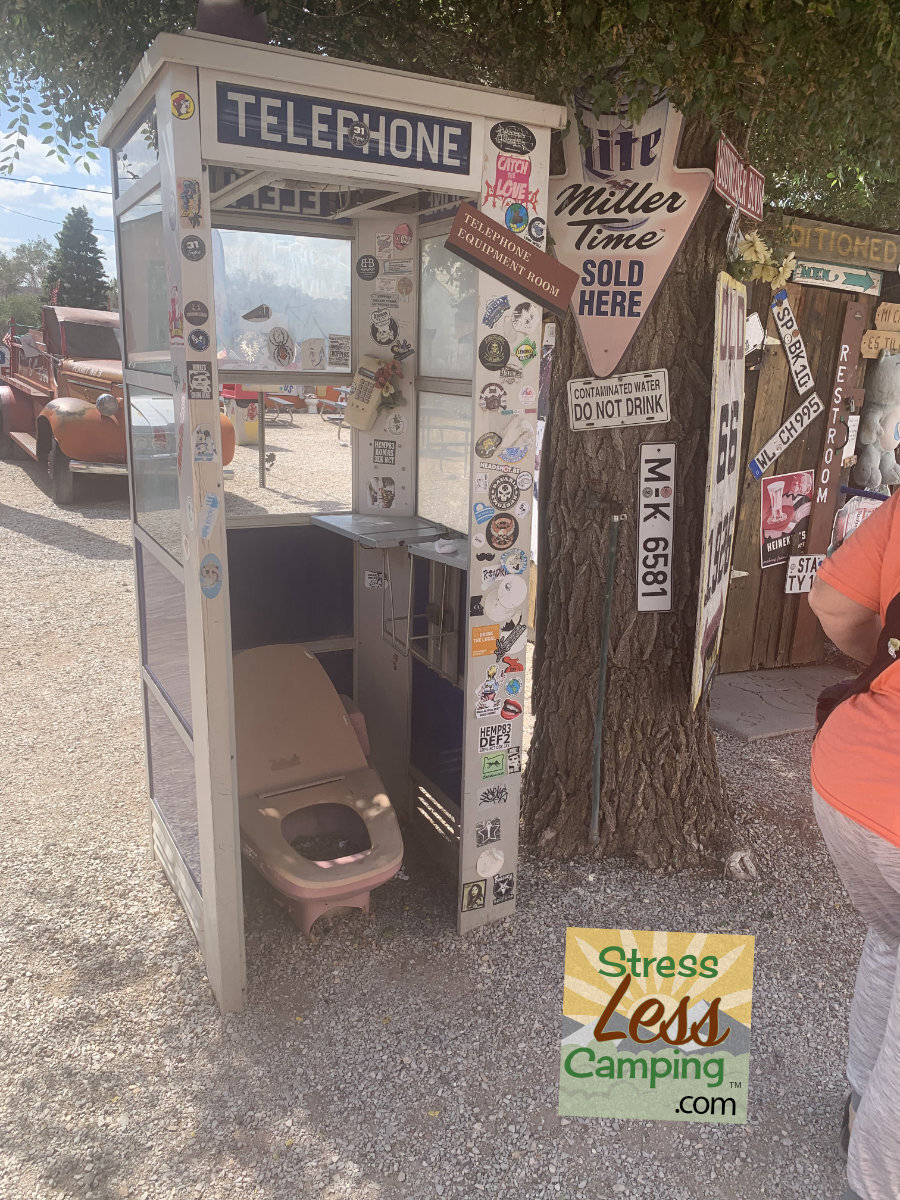
To bring attention to the restaurant, Delgadillo sliced the roof off of a 1936 Chevrolet, adorned the automobile with paint, horns and various automotive emblems and even an artificial Christmas tree in the rear of the car. That car is still there today.
Delgadillo's flair for showmanship extended to his menu, which still features such choices as a “cheeseburger with cheese” and “dead chicken.” His sense of humor is evident in “Juan’s Garden” at the rear of the property with its collection of old automobiles and kitsch in general; the humorous approach extends to the building.
Hand-painted signs in the parking area warn drivers that they are parking at their own risk. A neon sign in the window informs patrons, “Sorry, we're open.” The door that leads to the counter has two knobs, one on the right and one on the left. The knob on the right is a dummy; the one on the left actually opens the door.
Delgadillo would continue his humorous approach by bantering with his patrons over their choices of food, asking, for example, if they wanted cheese on their cheeseburgers. When you go in they ask if you have a good attitude and then the individual behind the counter squirts a fake stream of mustard on you.
But the food itself is quite good. We really enjoyed our hamburgers and fries and the shakes are terrific as well.
Down the street is the Road Kill Cafe, also a fun place to be with decent food and a silly atmosphere. We’ve been there as well and Tony still loves his shirt from the place.










